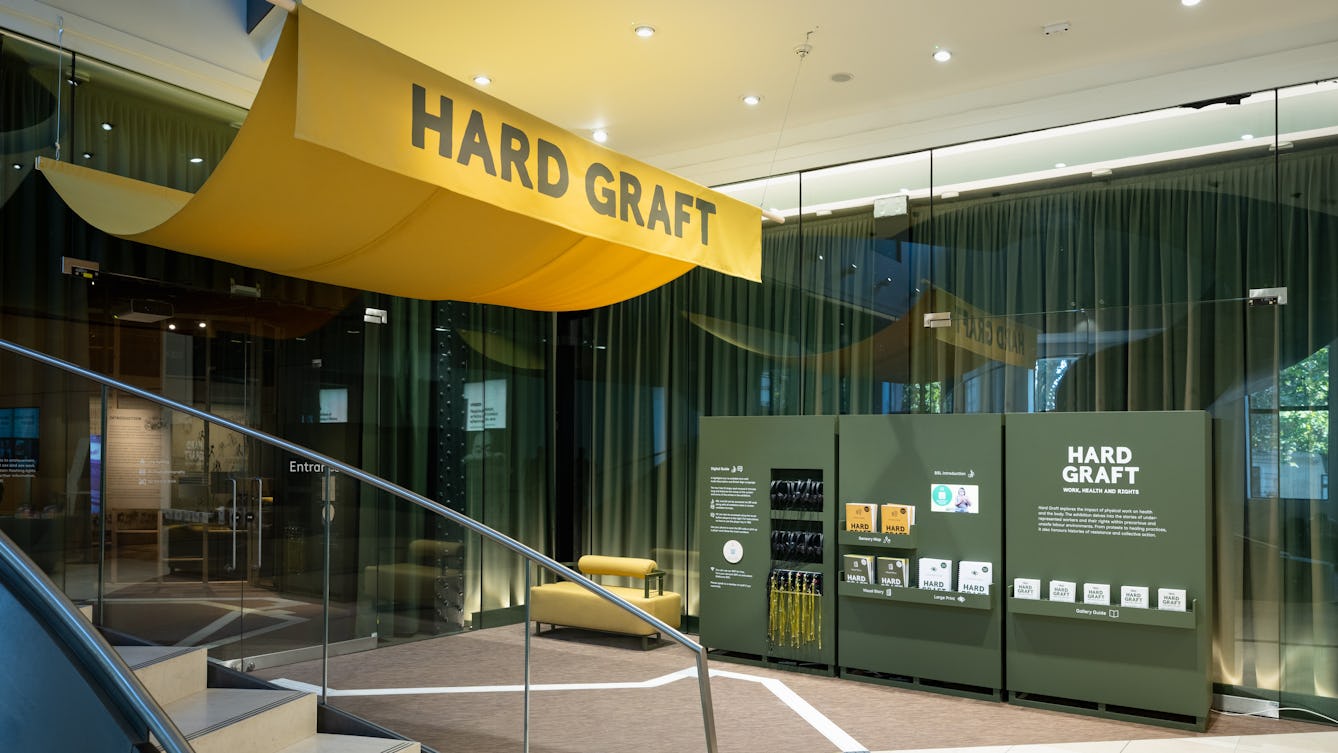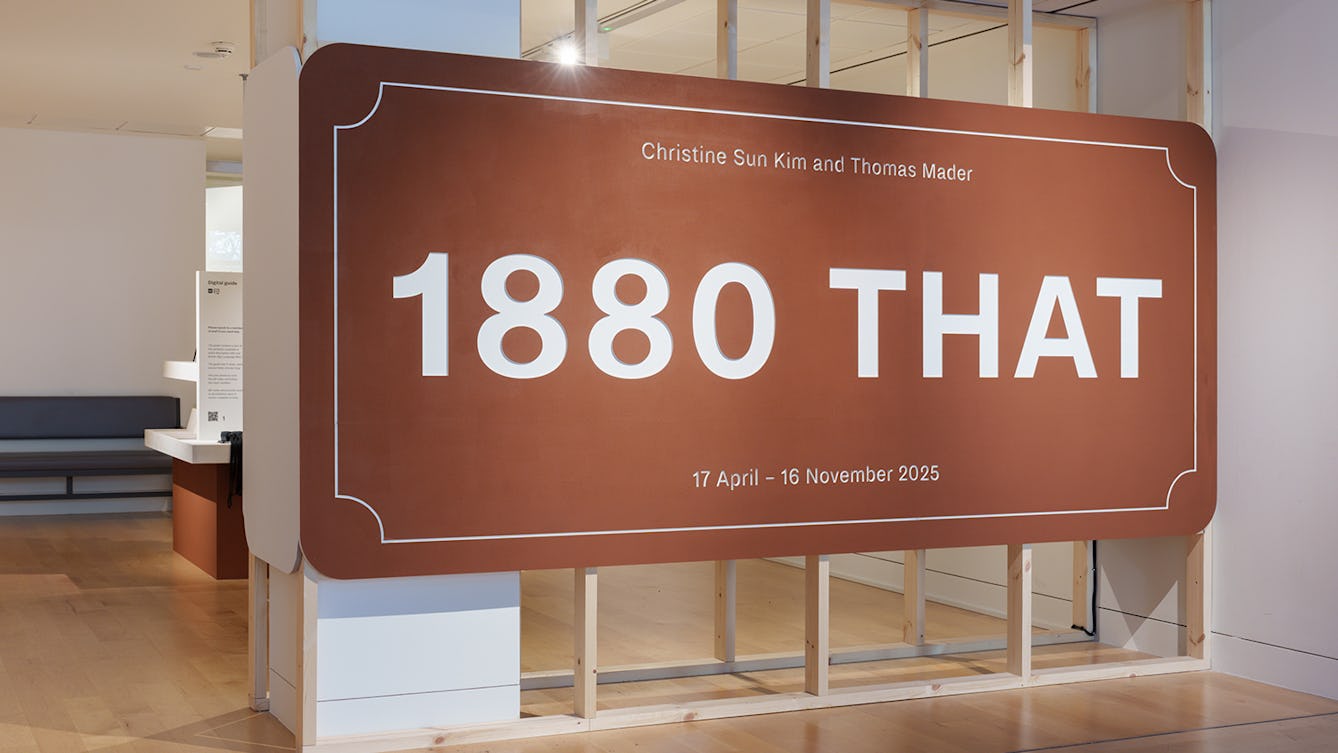Information to help you plan and prepare for your visit to the exhibition.
Introduction to Zines Forever!
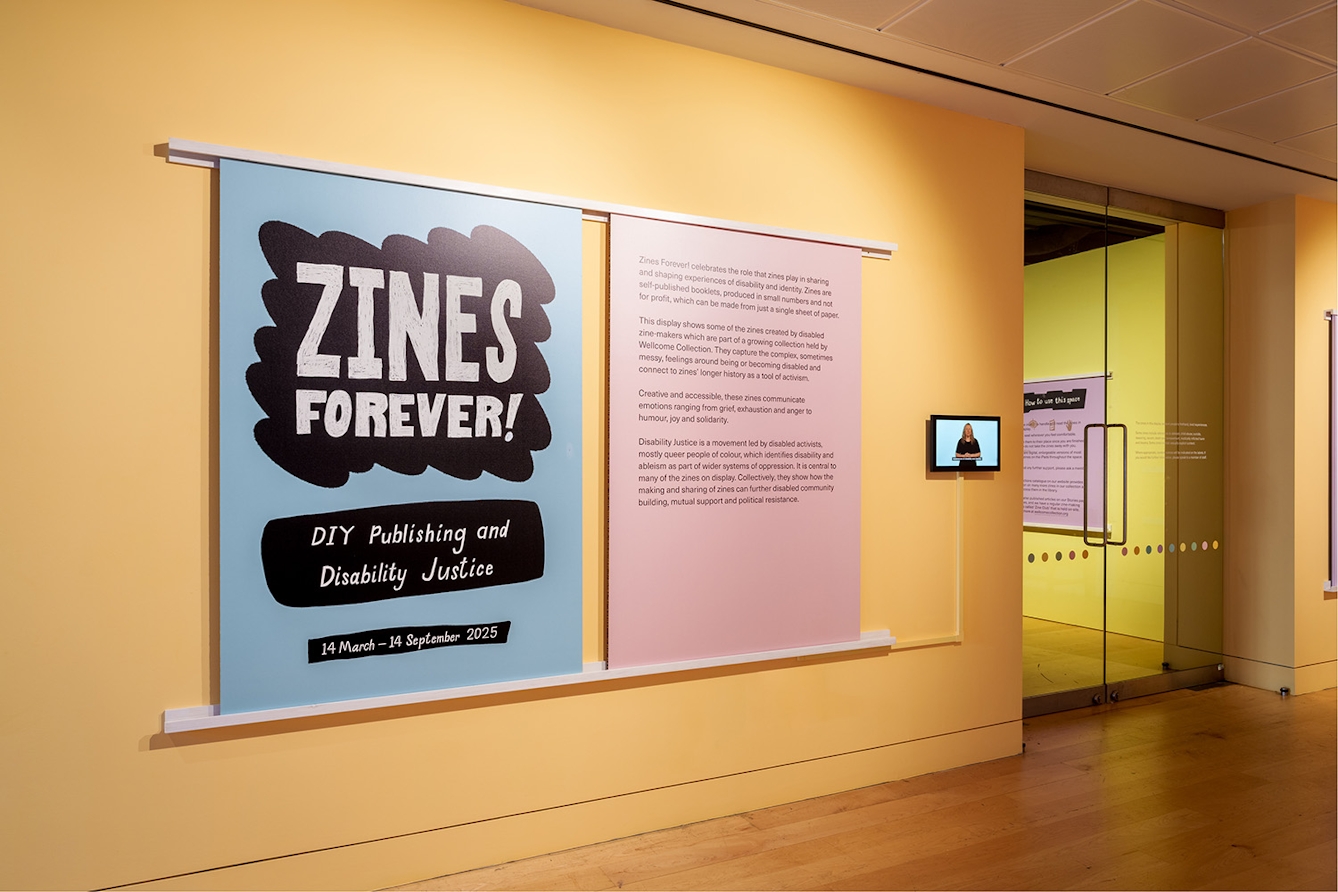
This exhibition is called ‘Zines Forever! DIY Publishing and Disability Justice’.
An exhibition is a collection of things to look at and learn about.
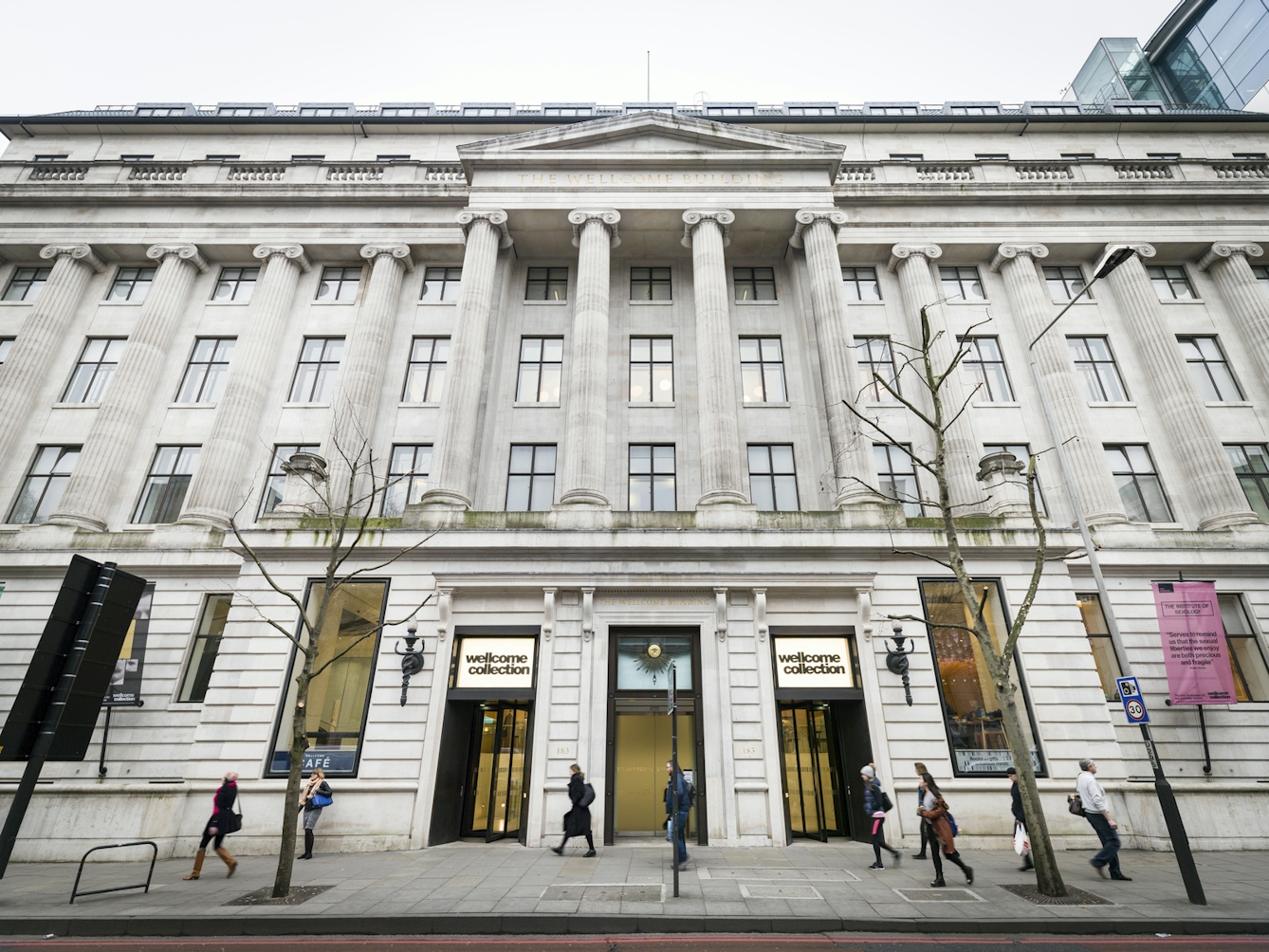
The exhibition is at Wellcome Collection.

The exhibition is in Gallery 3.
Gallery 3 is on level 1 of our building.
Introduction to Wellcome Collection
For more information about:
- opening times
- accessibility
- travel
click on this link: Visiting Wellcome Collection visual story.
About Zines Forever!
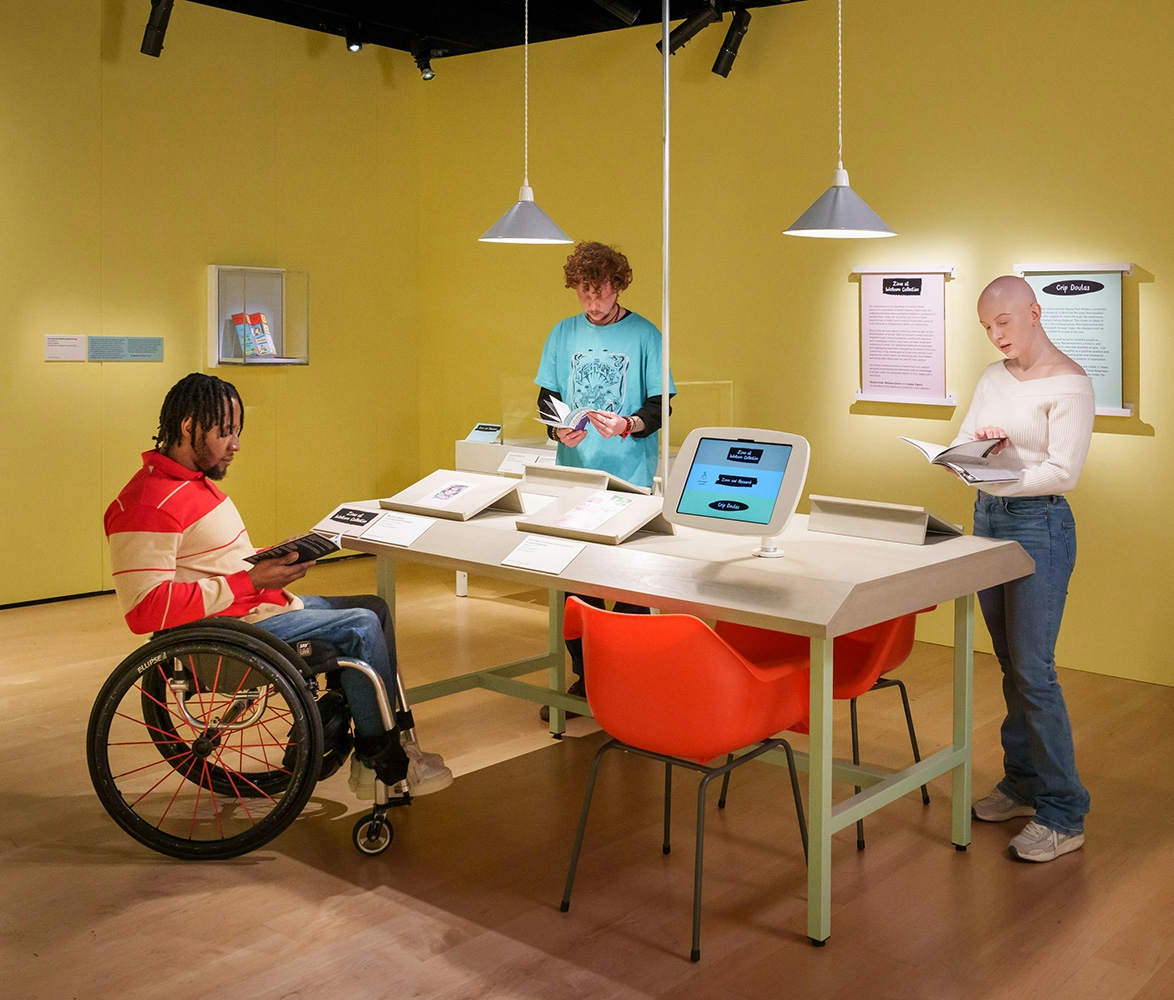
‘Zines Forever! DIY Publications and Disability Justice’ is a small exhibition about zines and Disability Justice.
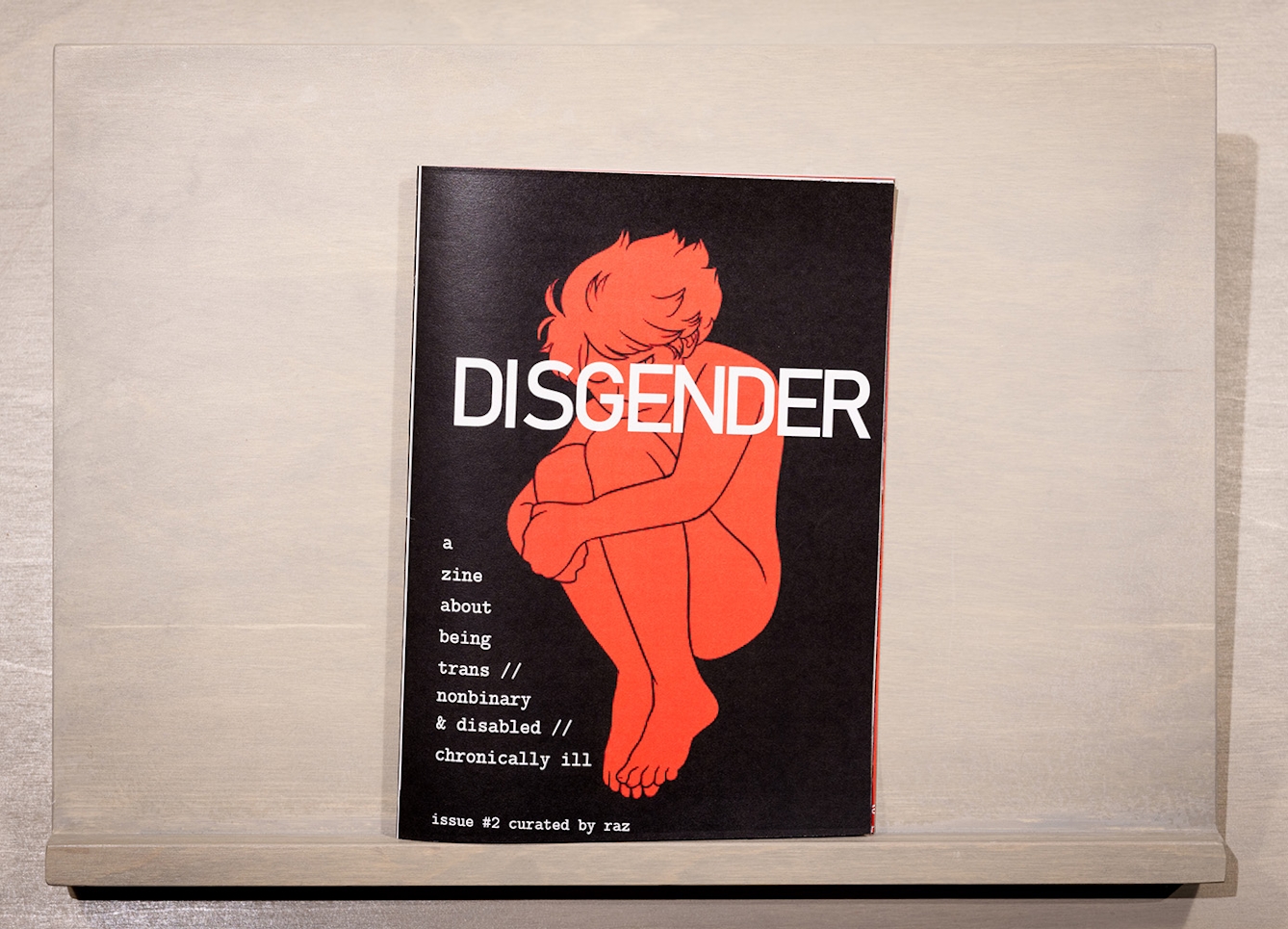
The exhibition has many different zines made by people who are disabled.
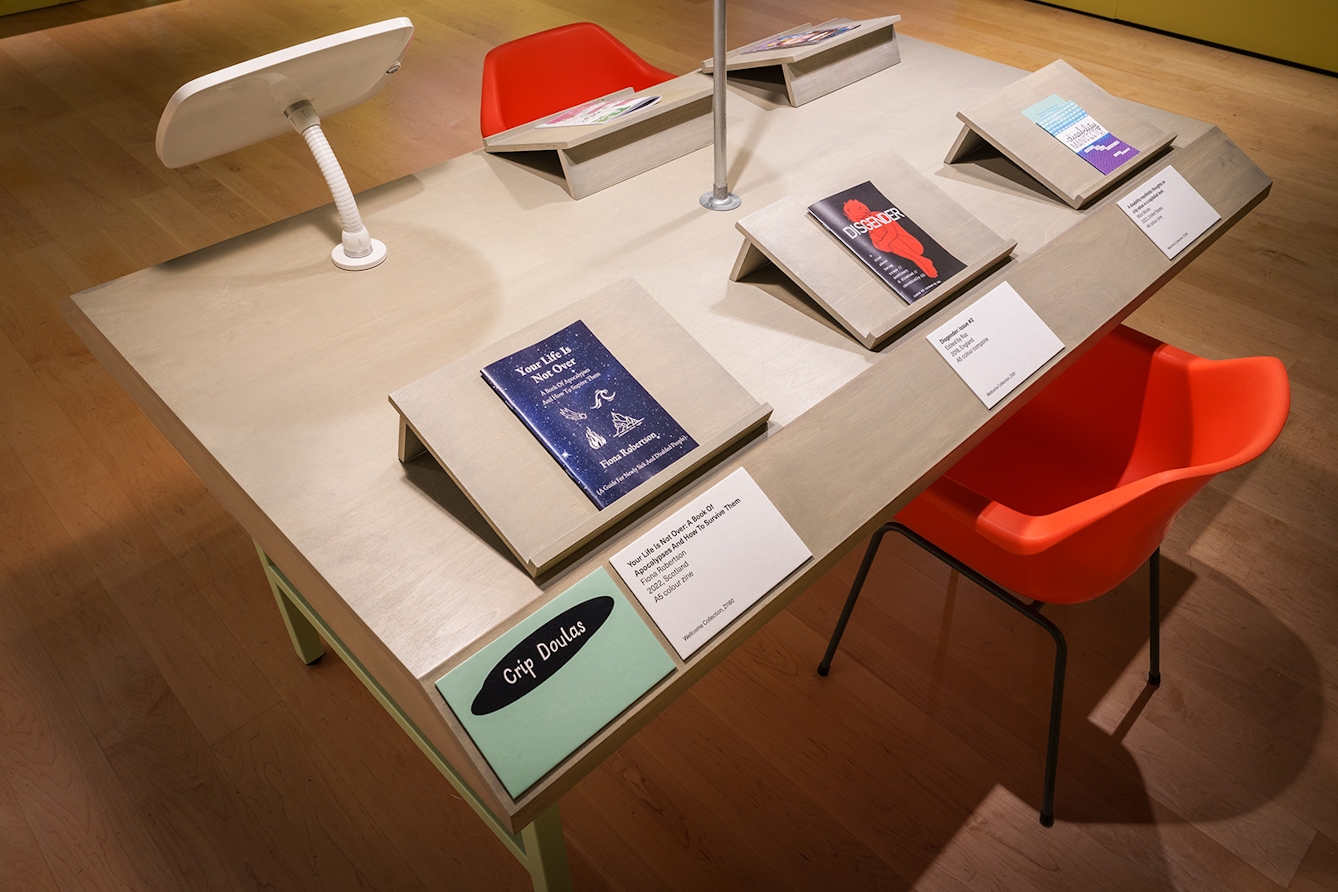
A zine is a booklet that people make and share themselves.
Disability Justice is the name of a movement led by disabled activists.
A movement is people coming together to think about things differently and make changes.
Justice means making things fair for everyone.
Activists are people who work to create social or political change.
Disability Justice tries to make life better for disabled people.

The exhibition is in Gallery 3.
Gallery 3 is on level 1.
What is in the exhibition

There are different things to look at and listen to in the exhibition.
These include:
- zines and books
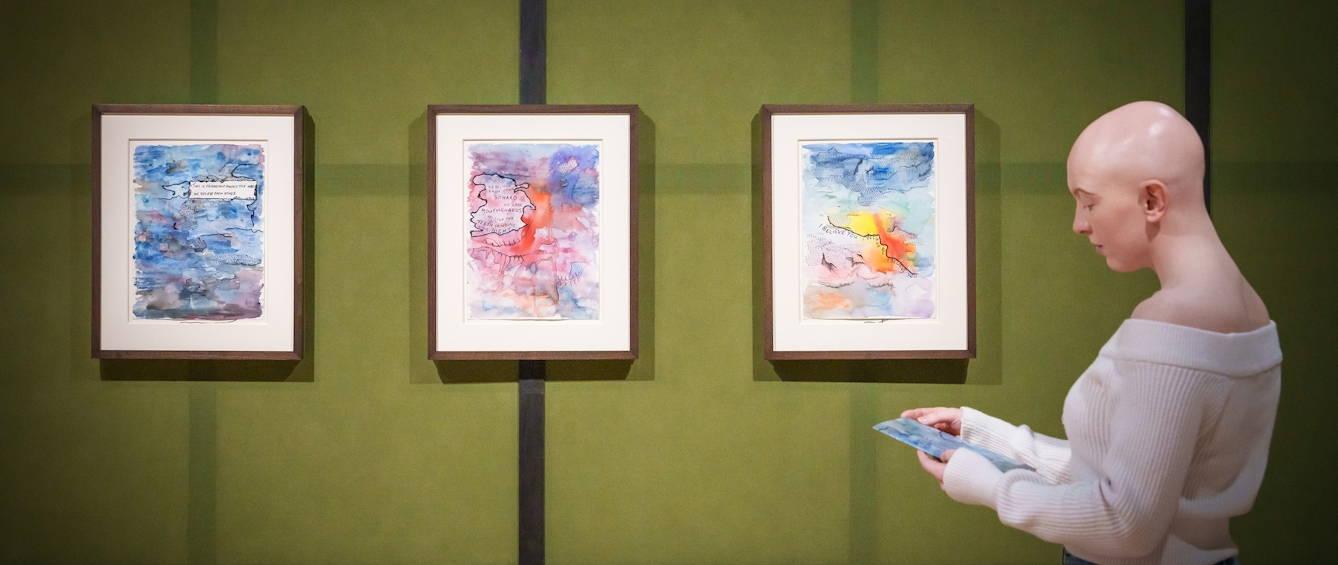
- artworks
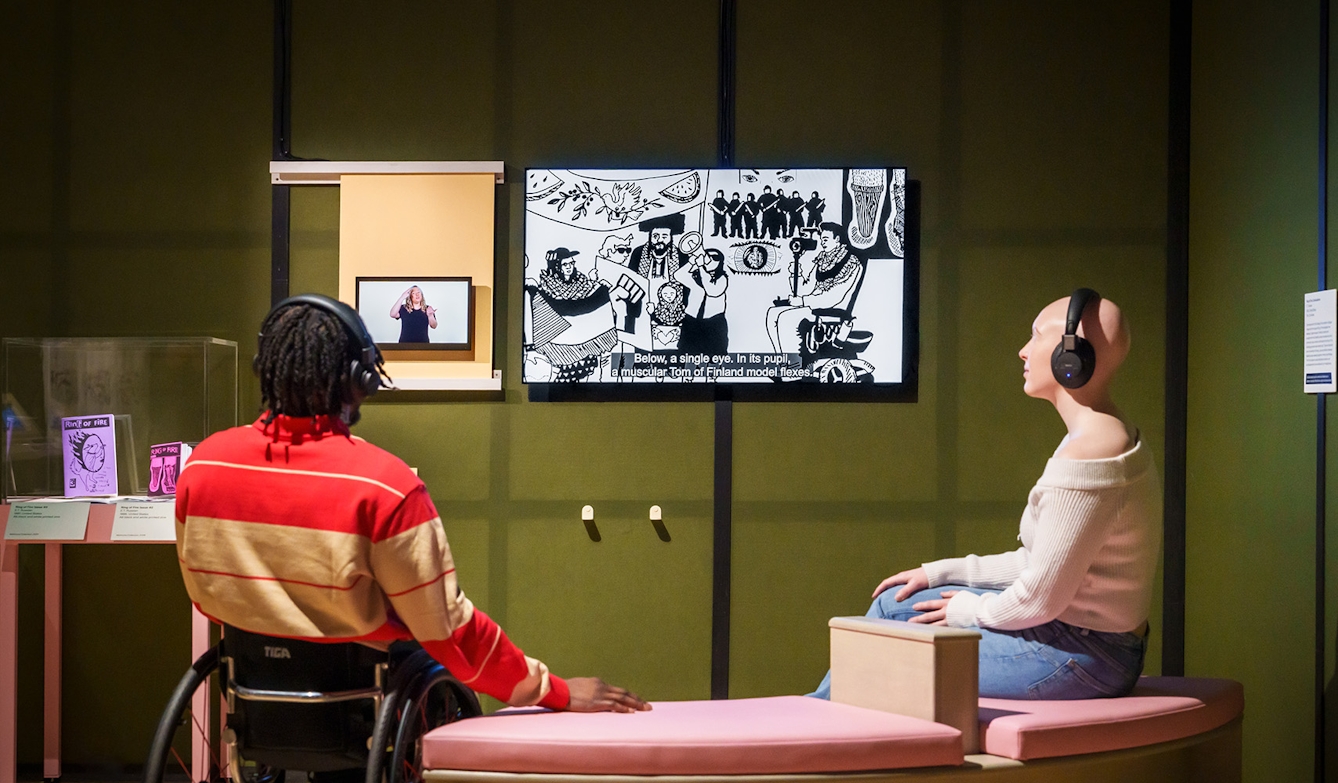
- films
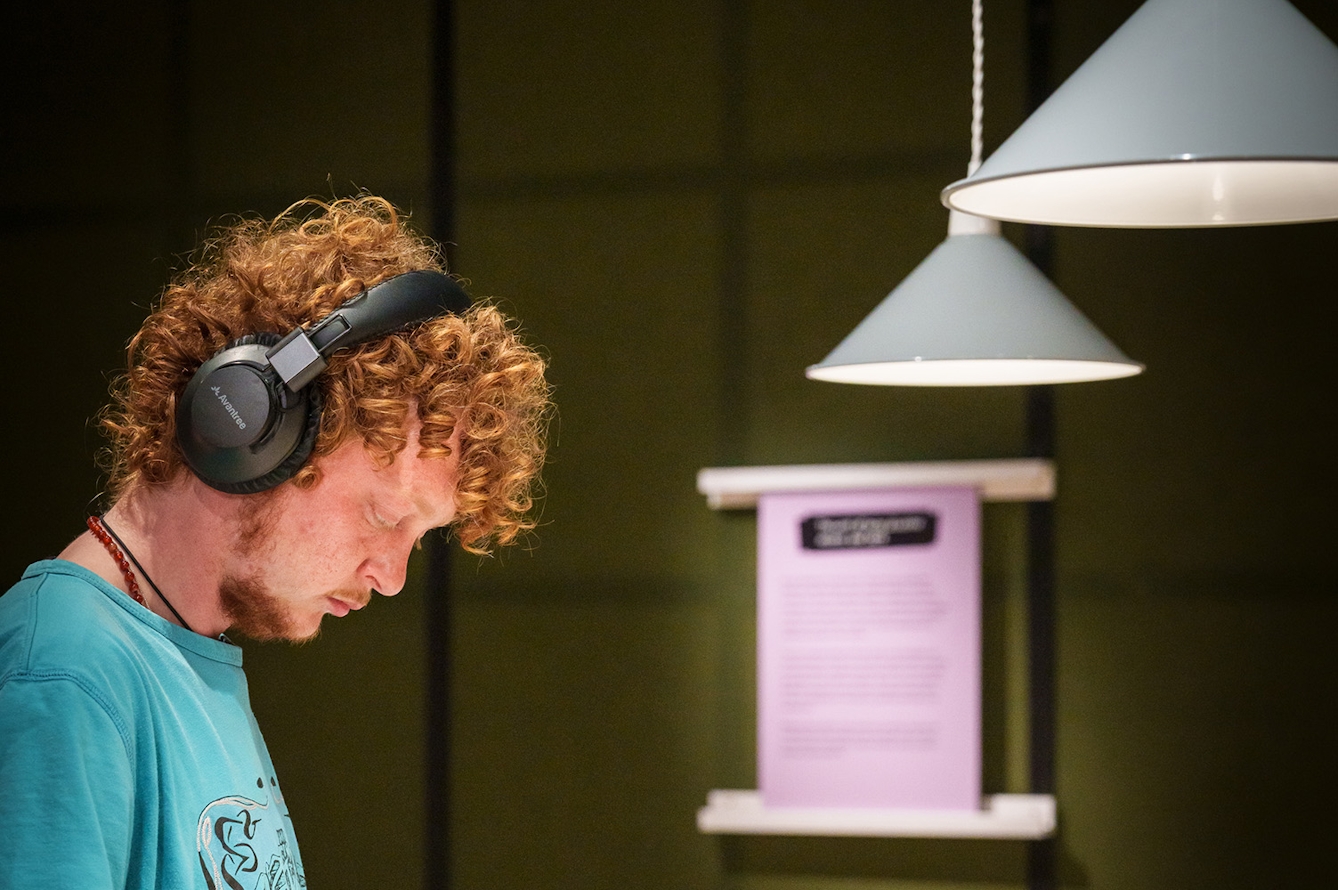
- soundworks
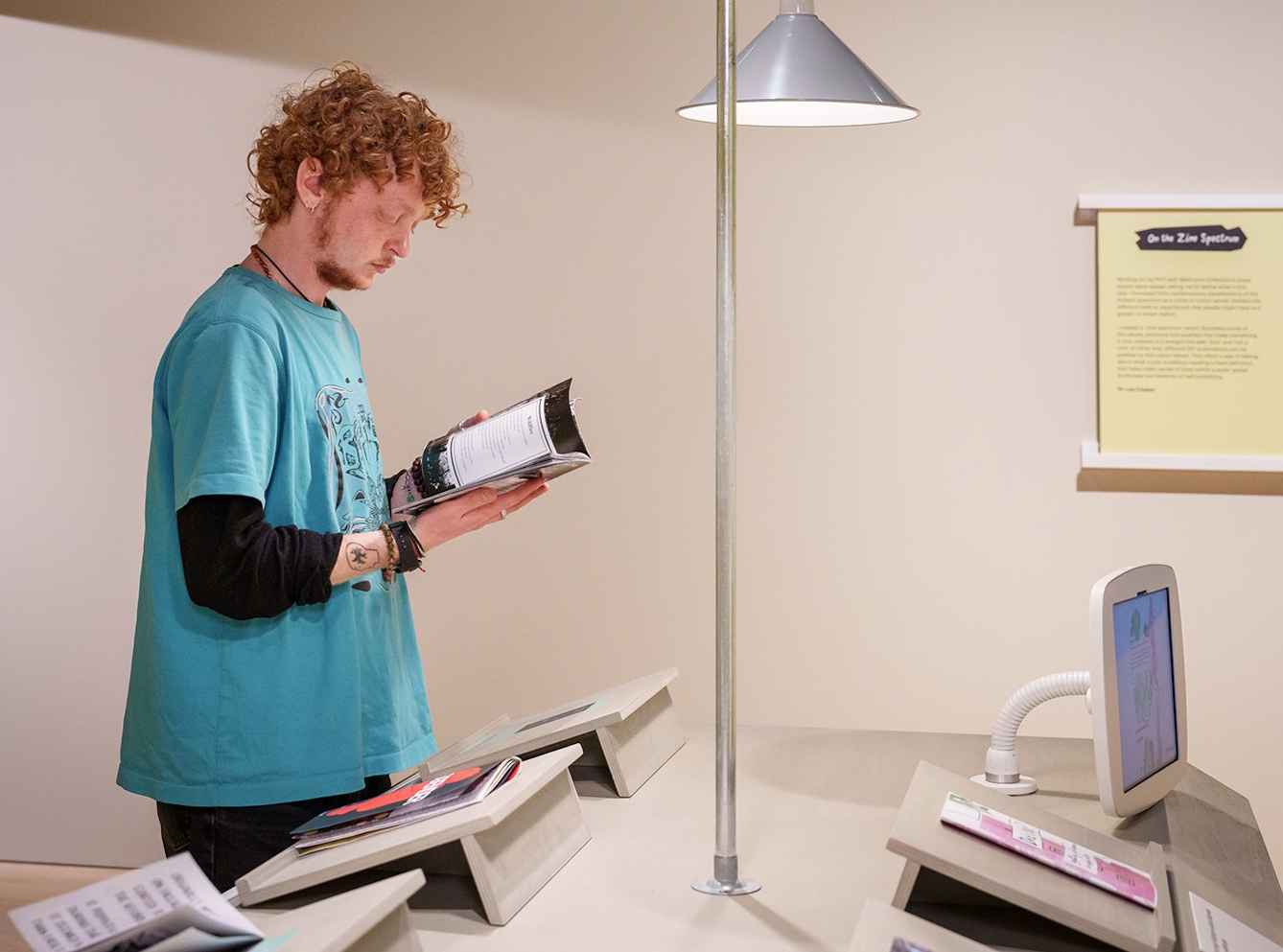
In the exhibition you can:
- Pick up and look at the zines.
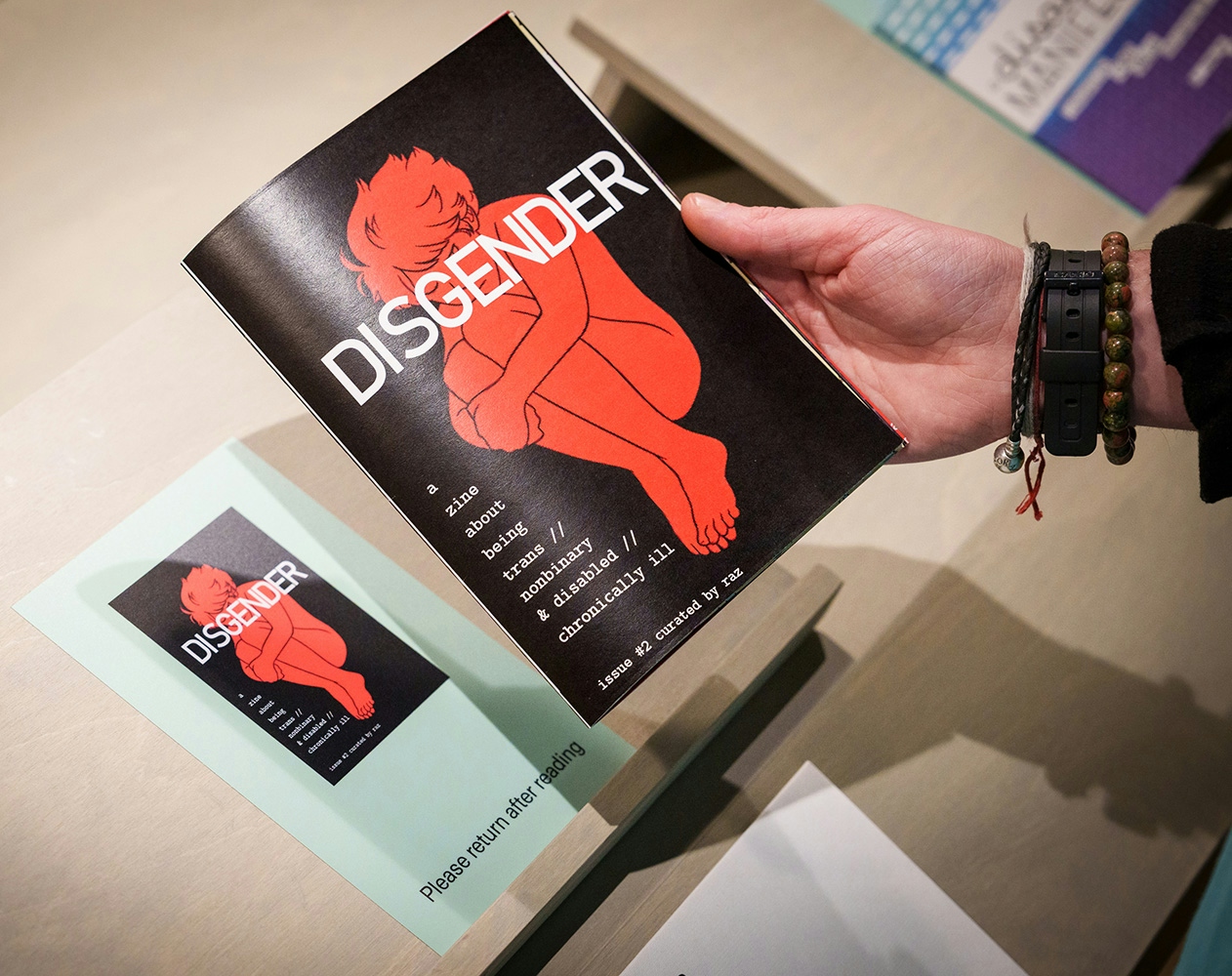
- Put the zines back in the right place after you have looked at them. The right place has a small picture of the zine cover. Please do not take the zines away with you.
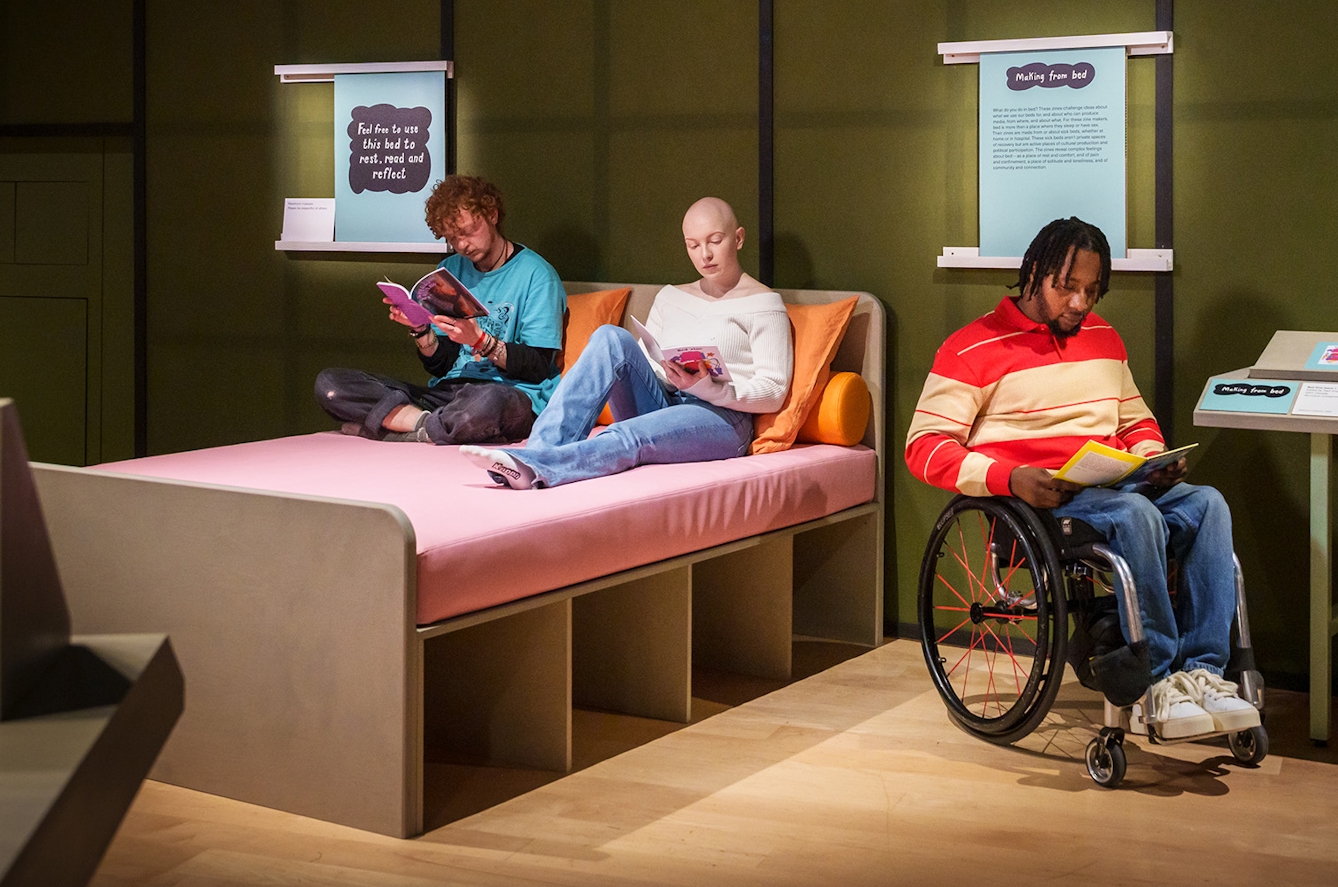
- Sit anywhere you feel comfortable.
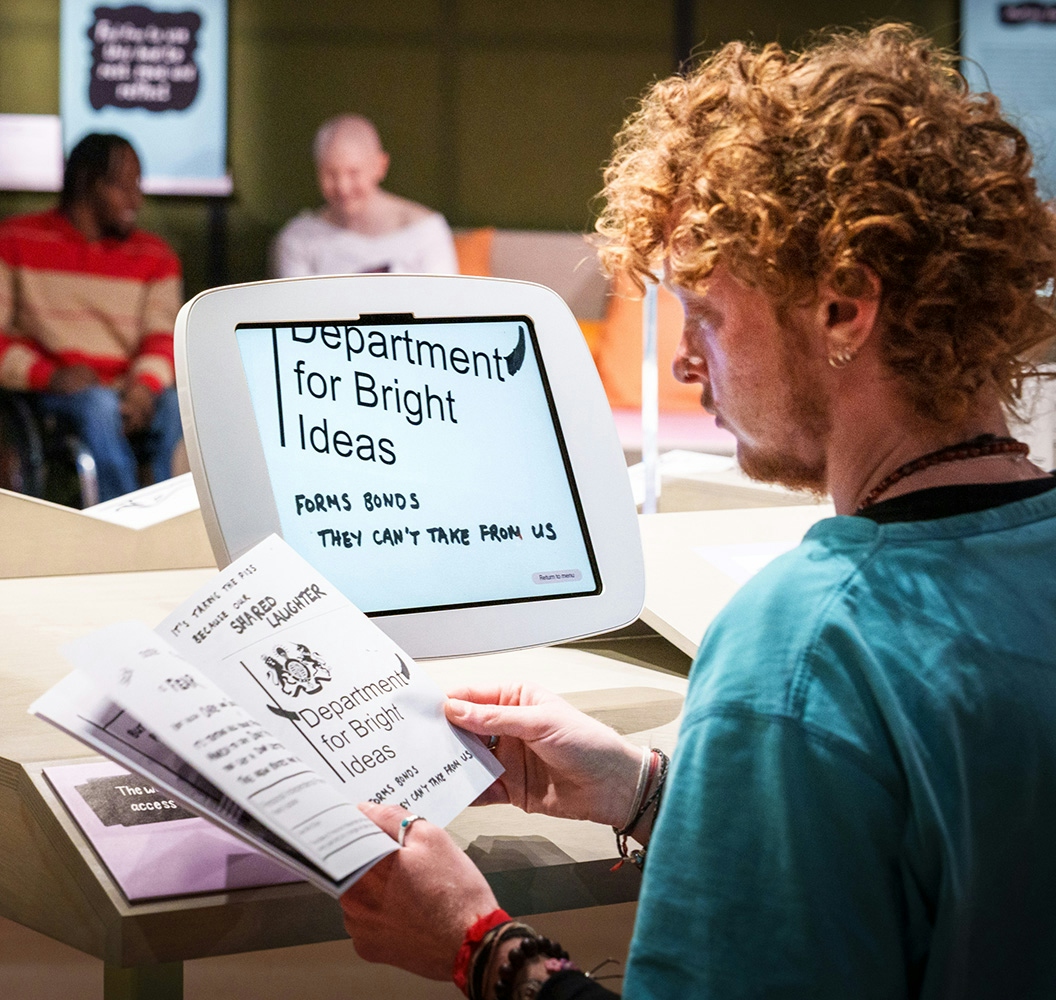
There are digital versions of most of the zines on iPads in the exhibition.
You can make the zines bigger or smaller on the iPad screen.
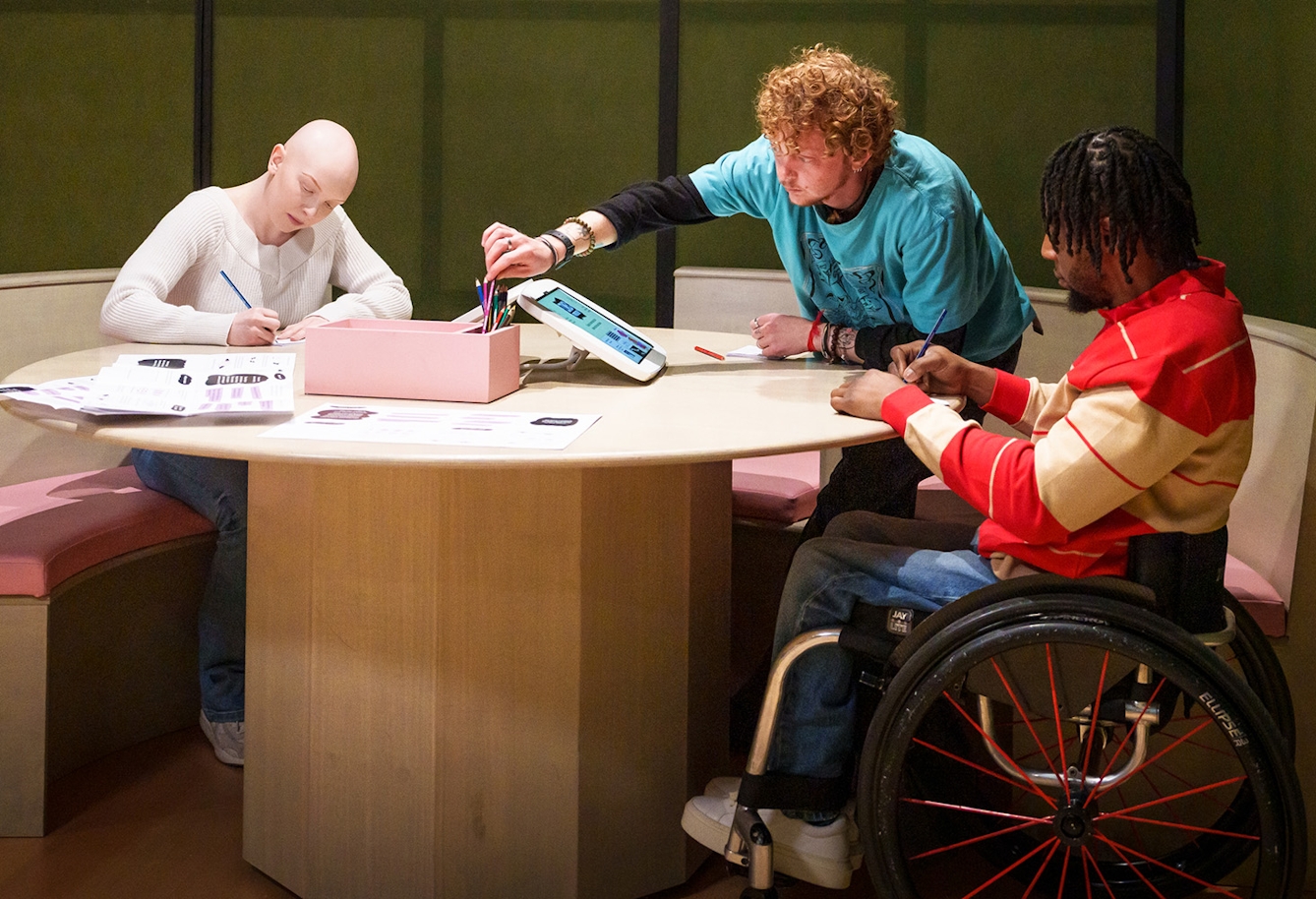
There is an activity area where you can write or draw your own zine.
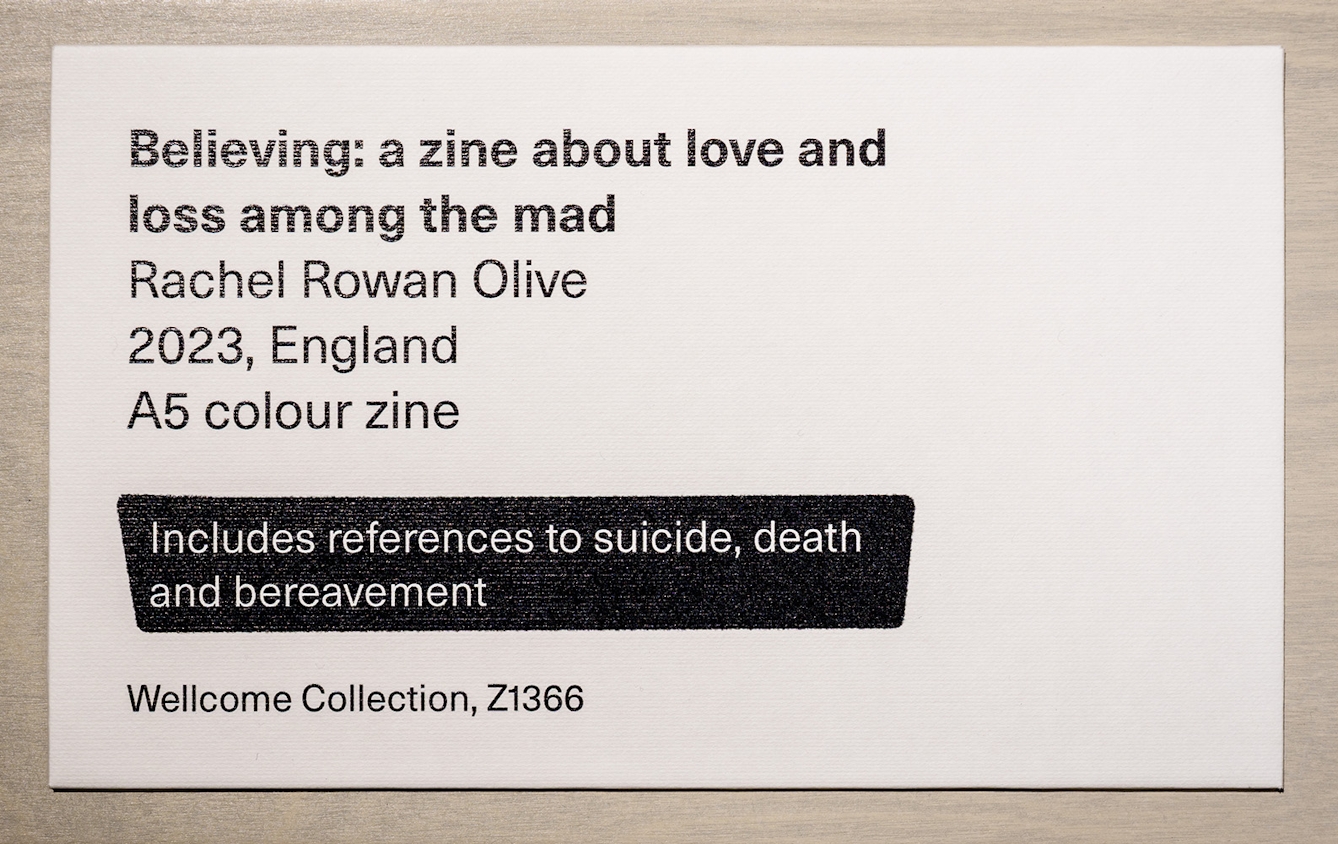
When a zine talks about one of these ideas there is a note on the label.
If you need help with anything, you can ask a member of staff.
Sensory information
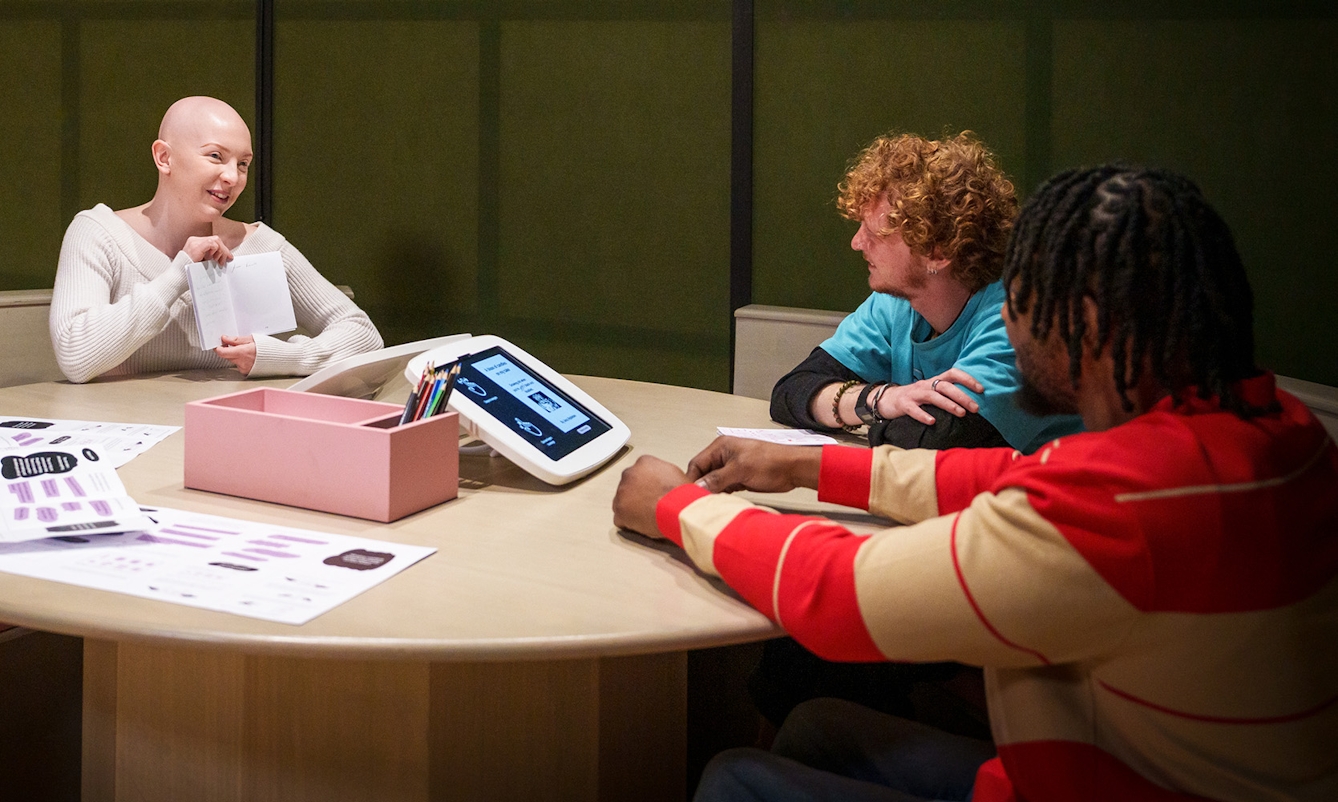
You can speak or chat in this space.

This is a sensory map for the exhibition, Zines Forever!
It shows information about sound, light, video screens and seating areas in the exhibition.
At the information desk on the ground floor we lend out ear defenders, tinted glasses, tinted visors and weighted lap pads.
What is in room 1

‘Zines Forever! DIY Publications and Disability Justice’ is a small exhibition about zines and Disability Justice.
This exhibition talks about:
- Why people make zines.
- What zines do for disabled people.
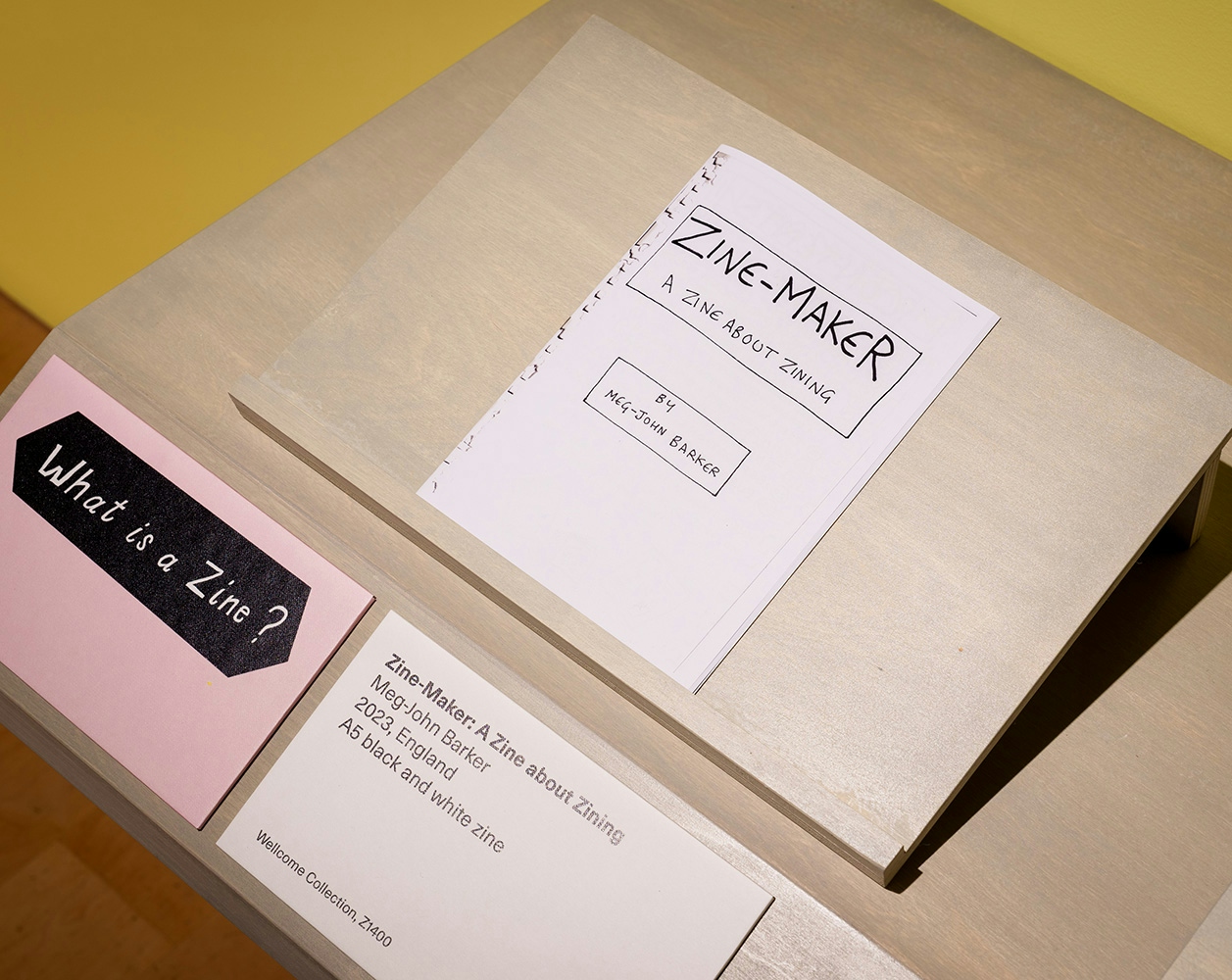
What is a zine?
A zine is a booklet that people make and share themselves.
They can be used to express feelings and ideas.
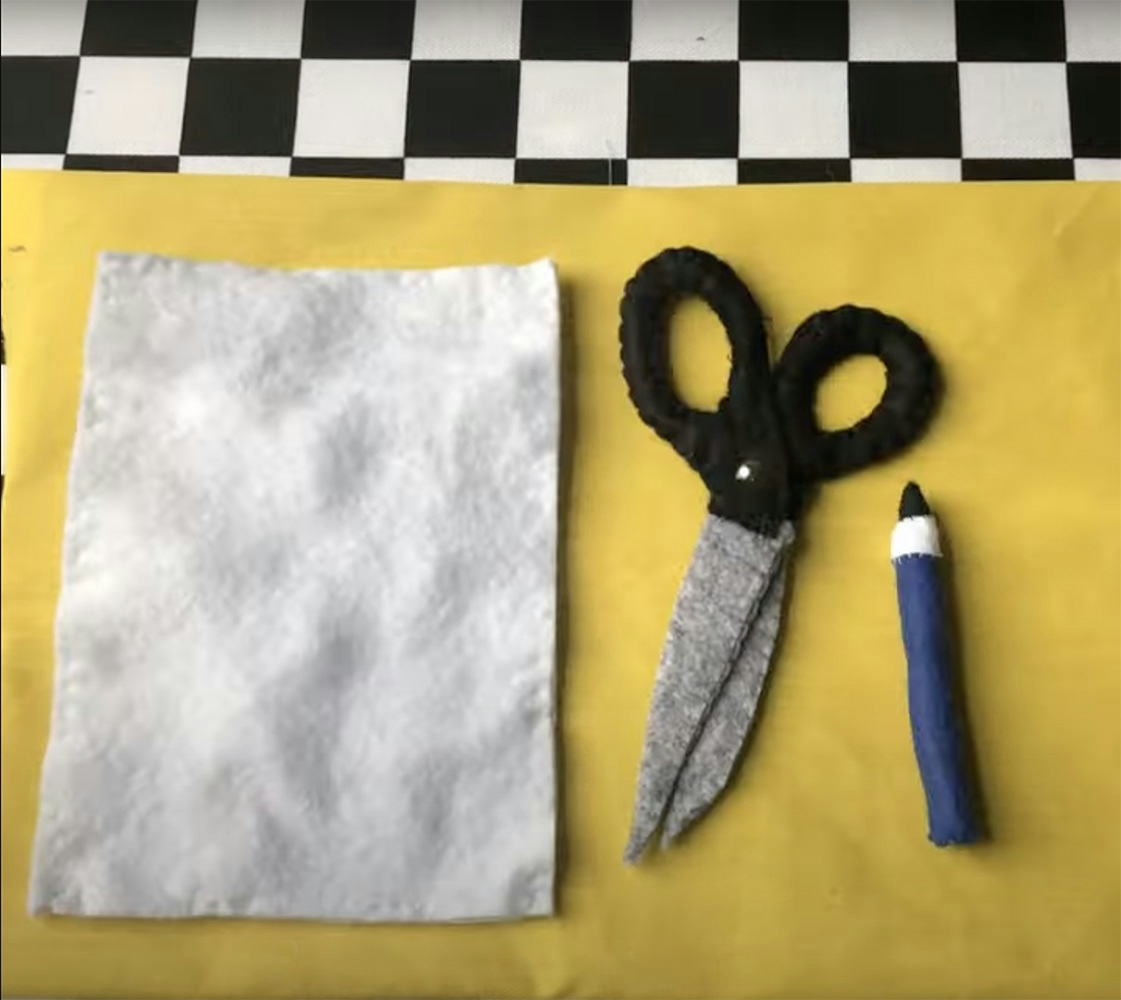
Making a zine can be cheap and easy to do.
Zines can be made from just a single sheet of paper.
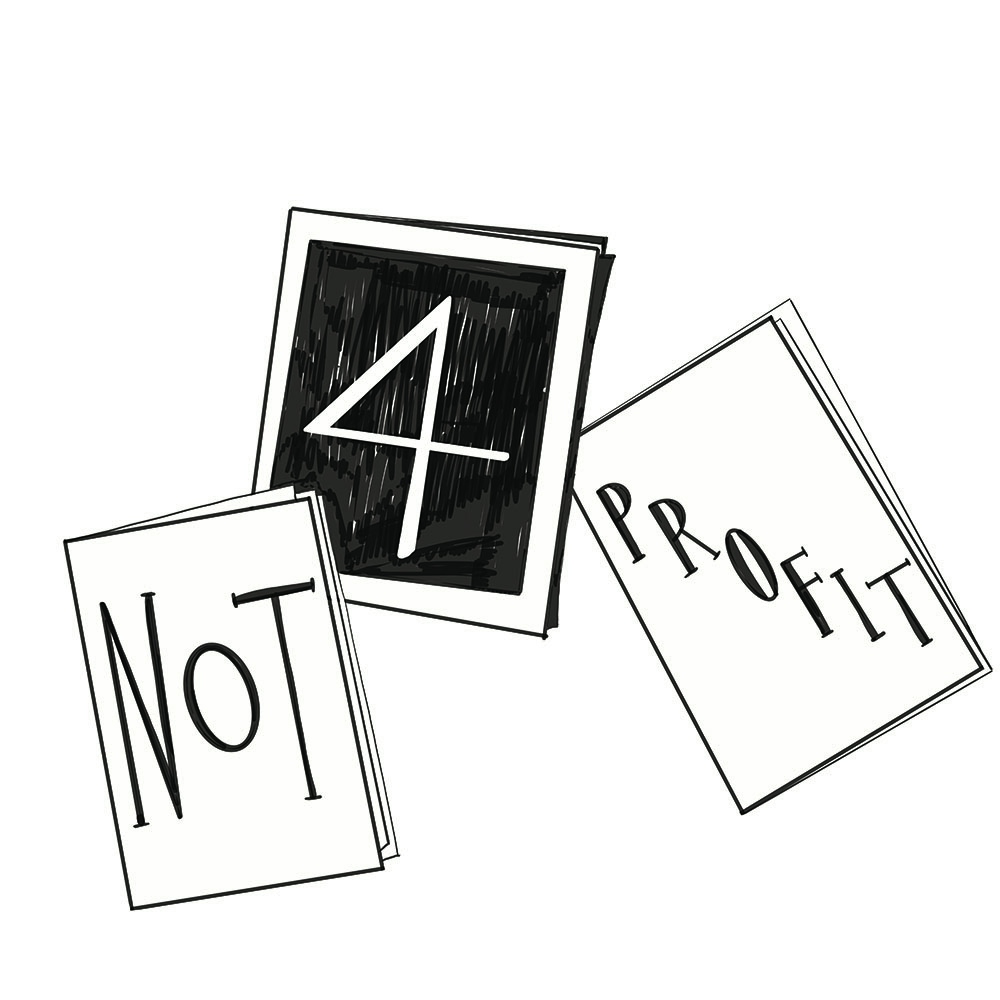
Zines are not made to make money.
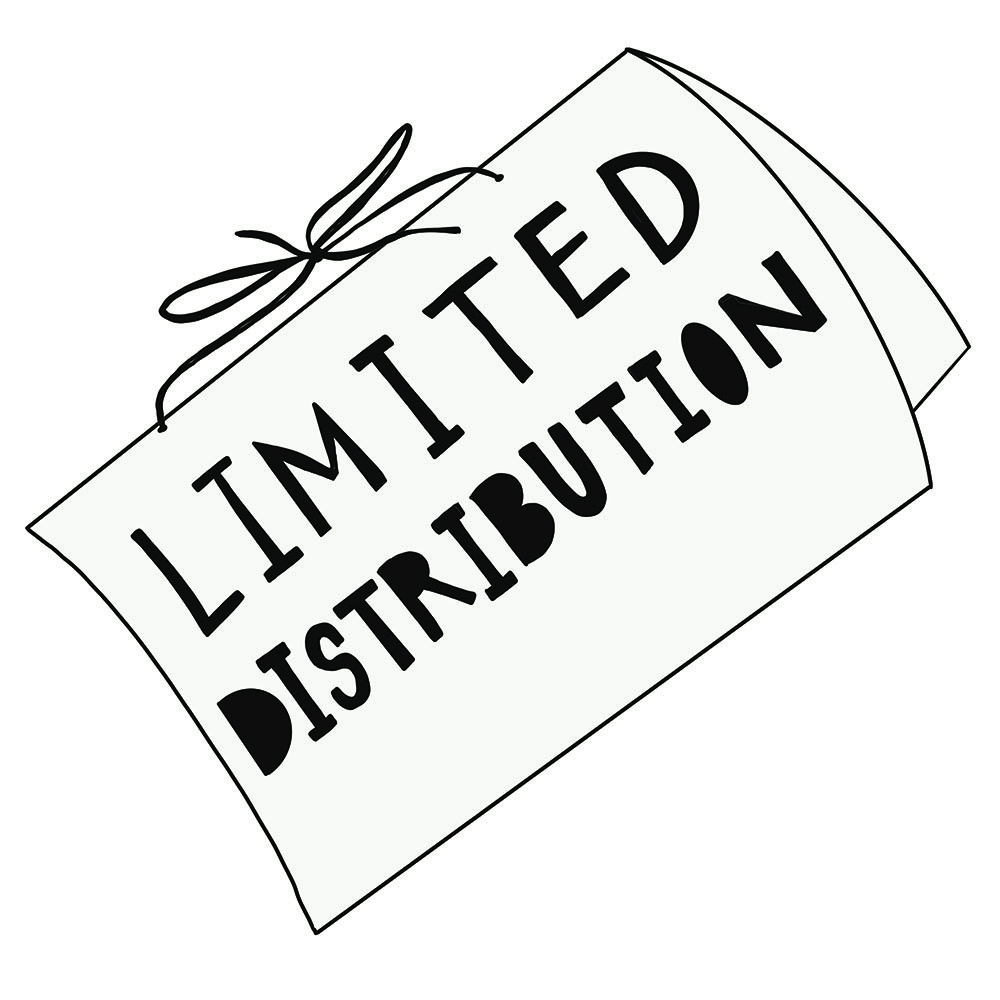
Zines are made in small numbers.
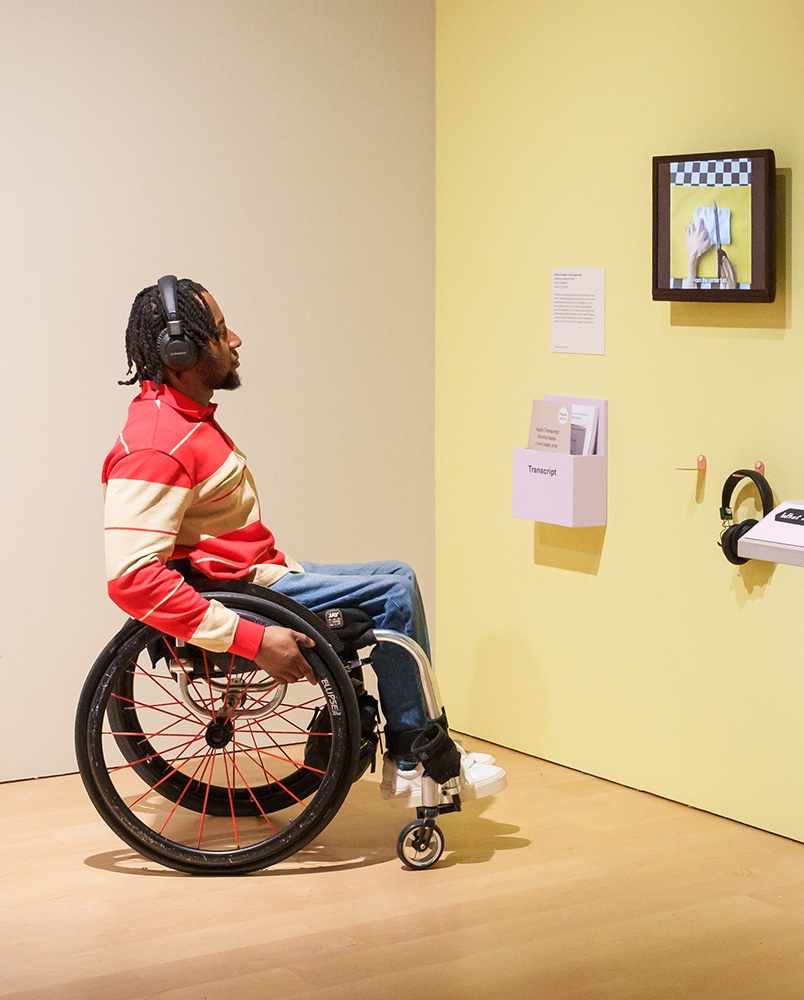
There is a short film called ‘How to make a one-page zine’ by artist Seleena Laverne Day. You can listen to the sound on headphones.
In the film she shows you how to make a zine out of one sheet of paper.
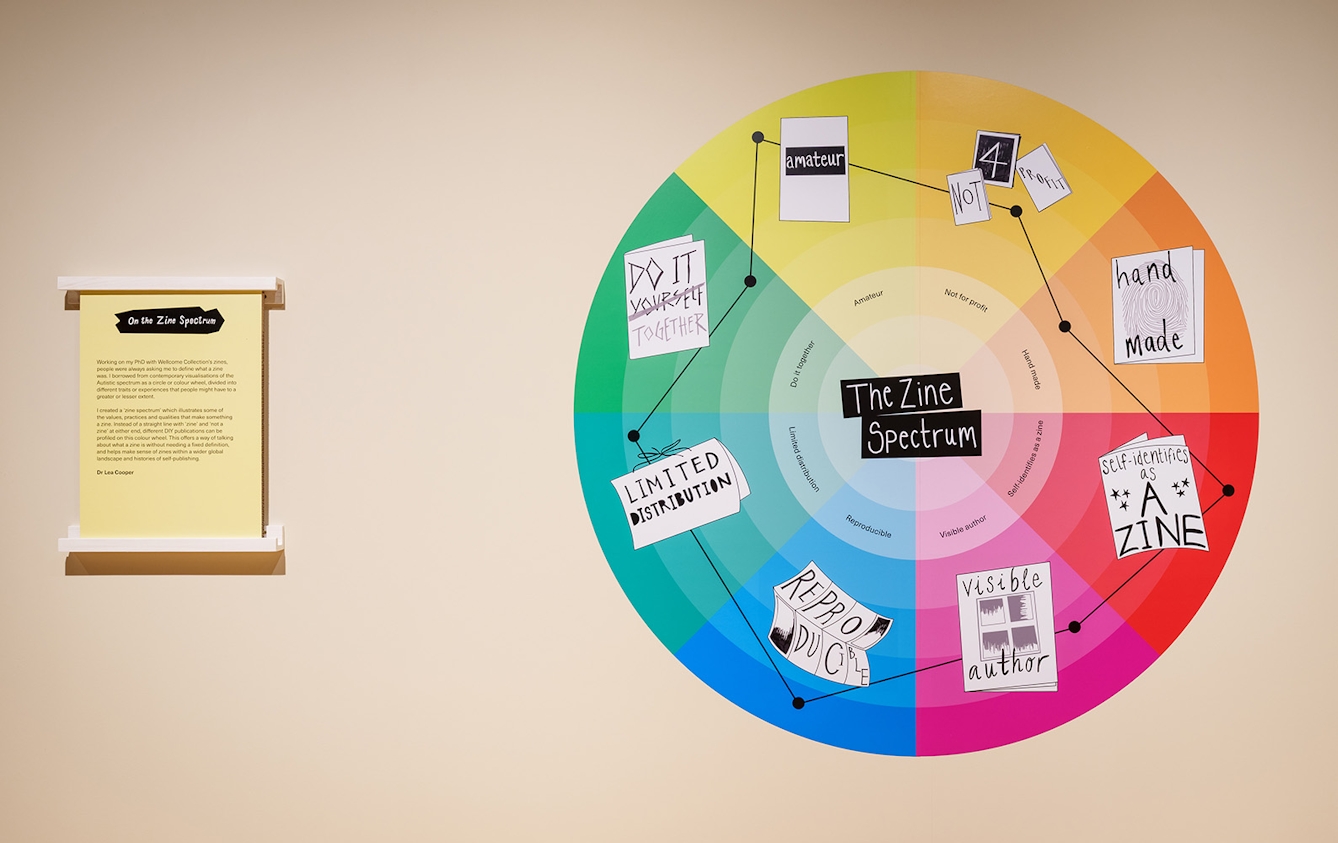
On the Zine Spectrum by Lea Cooper
This is a large picture on the wall.
It was created by Lea Cooper.
Lea Cooper planned this exhibition.
People ask, “what is a zine?”. It is difficult to give a simple answer.
This is because a zine can be lots of different things.
Lea made this colour wheel picture to show different ways of thinking about what a zine is.
Different colours on the wheel show things that a zine can be.
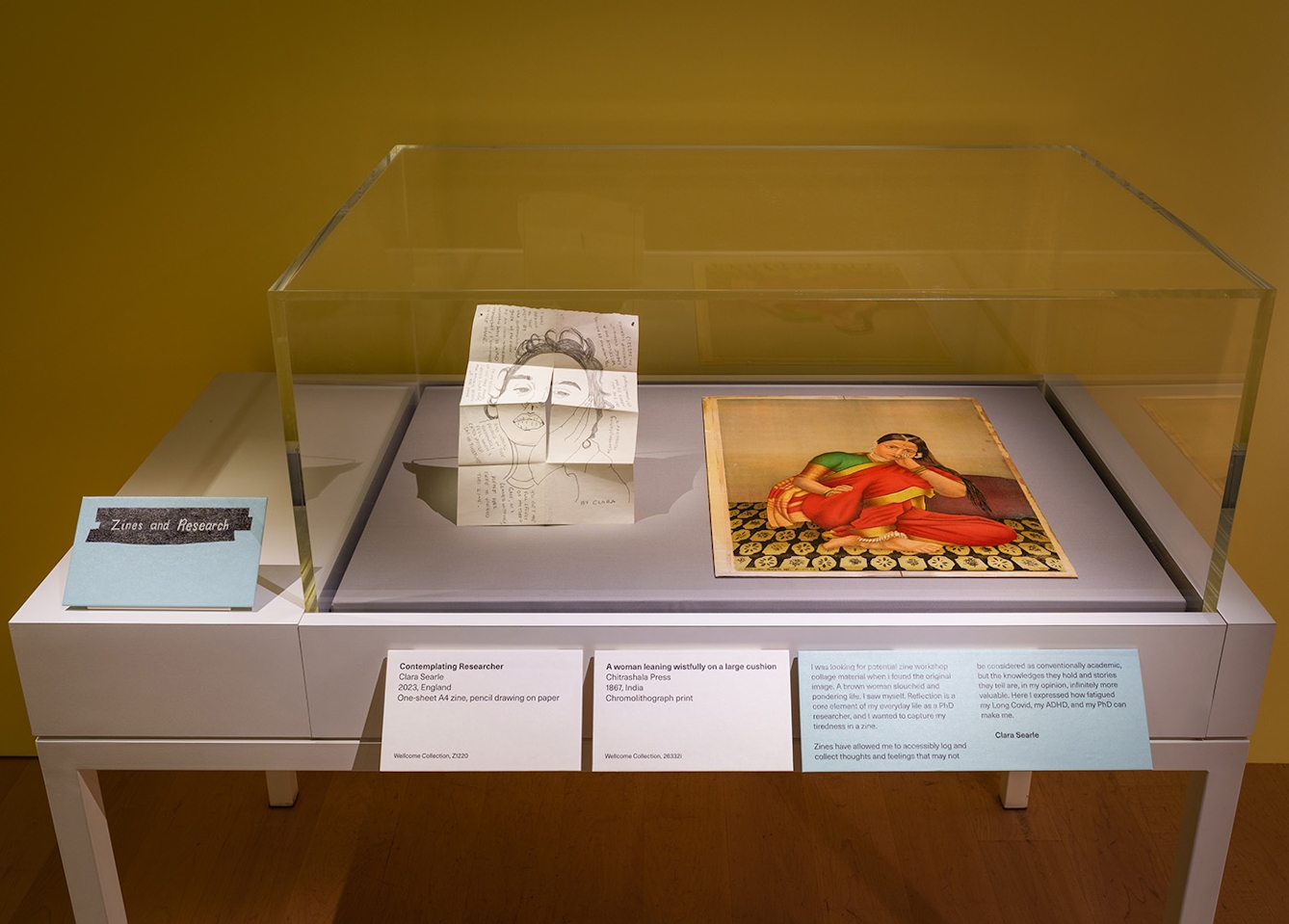
Zines and research
This section is about how researchers can use zines.
A researcher is someone who tries to understand something.
![A zine titled ‘Our [seamful] madzines methodology’ consisting of a single folded paper with different coloured squares on it. The squares contain different illustrations, text boxes and words.](https://images.prismic.io/wellcomecollection/Z9QSbBsAHJWomik2_ZinesVS21.jpg?w=902&auto=compress%2Cformat&rect=&q=100)
Madzines is a project that uses zines to think about mental health.
Madzines made a zine called ‘Our [seamful] madzines methodology’ that talks about their research. A methodology is a way of doing something.
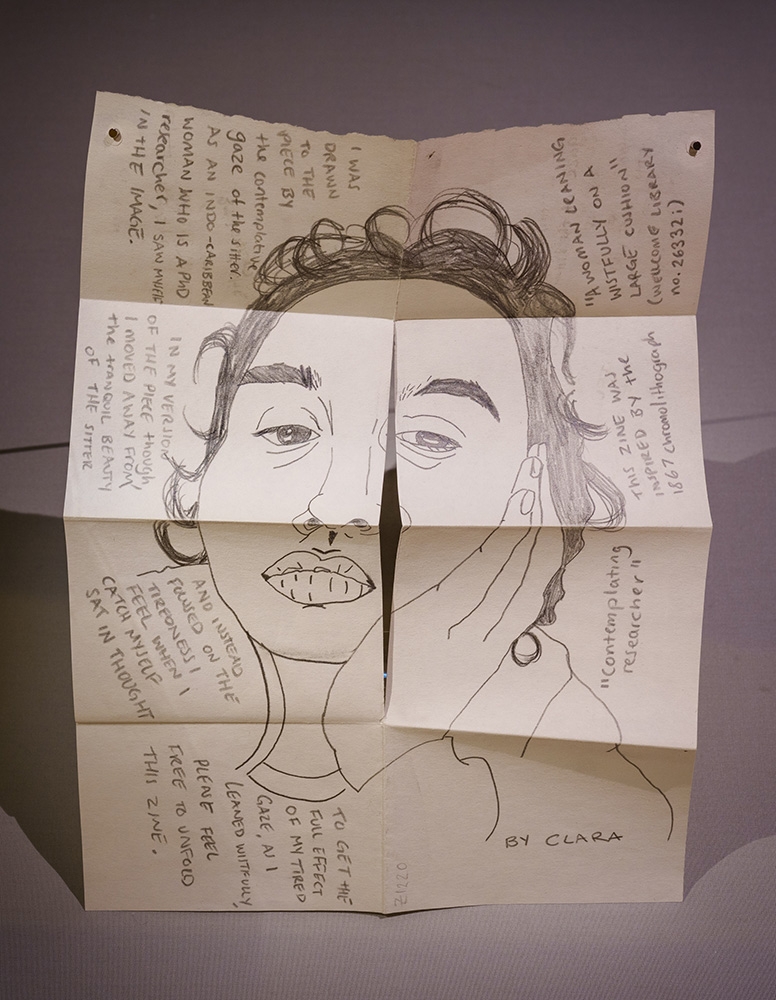
Clara Searle is a researcher.
Clara made a small zine called ‘Contemplating Researcher’.

Clara made this while looking at a print in Wellcome Collection called ‘A woman leaning wistfully on a large cushion’.
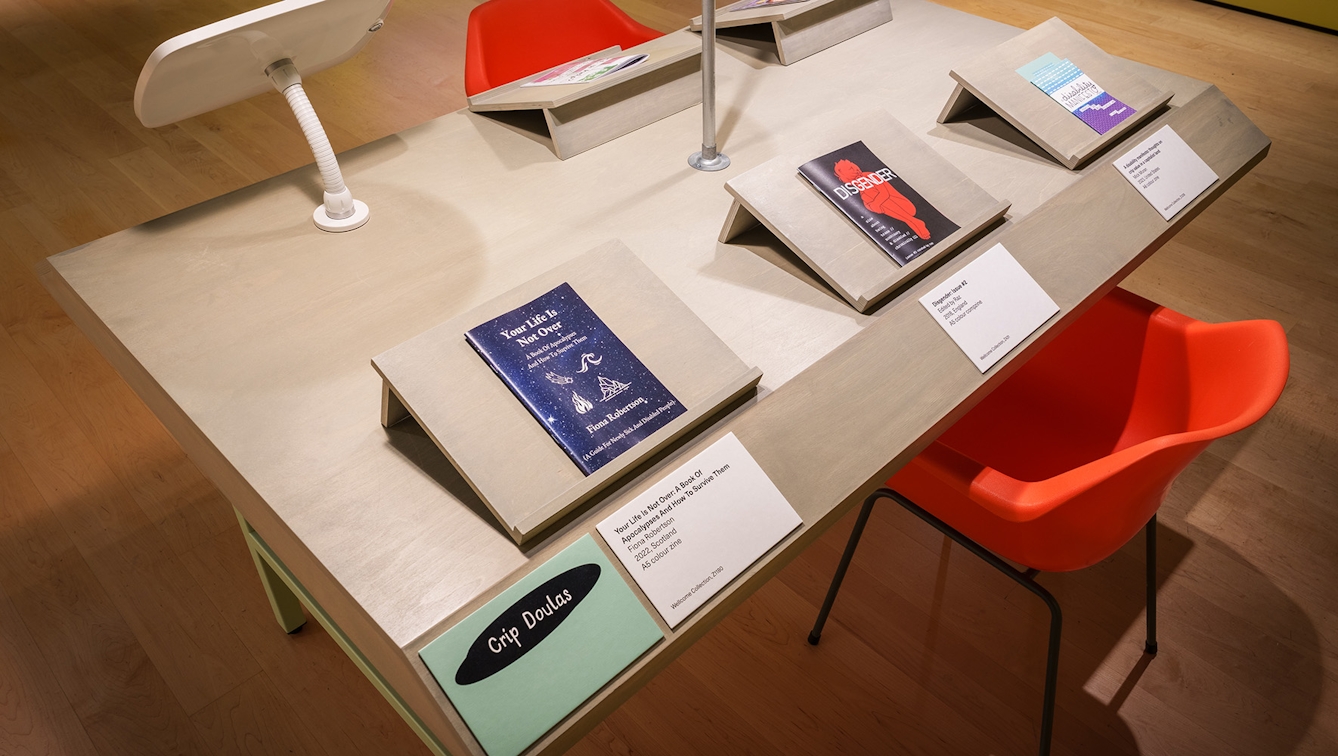
Crip Doulas
Zines can support people who are disabled.
Crip is used by some disabled people to describe themselves.
Crip is an offensive word for disabled. But some disabled people reclaim it as a positive word.
When people reclaim a word they take a negative word and give it a positive meaning.
A doula is someone who gives support. For example they might give support:
- during pregnancy
- when someone is giving birth
- when someone is dying
Many zines in this exhibition can be crip doulas for their makers and readers. Crip doulas support people who are disabled.
What is in room 2

In room 2 there are zines about different things to do with disability.
They tell stories about:
- the work of being disabled
- making zines in bed
- grief and loss
You can pick up and look at all the zines in this room.
Please put them back after you have finished.
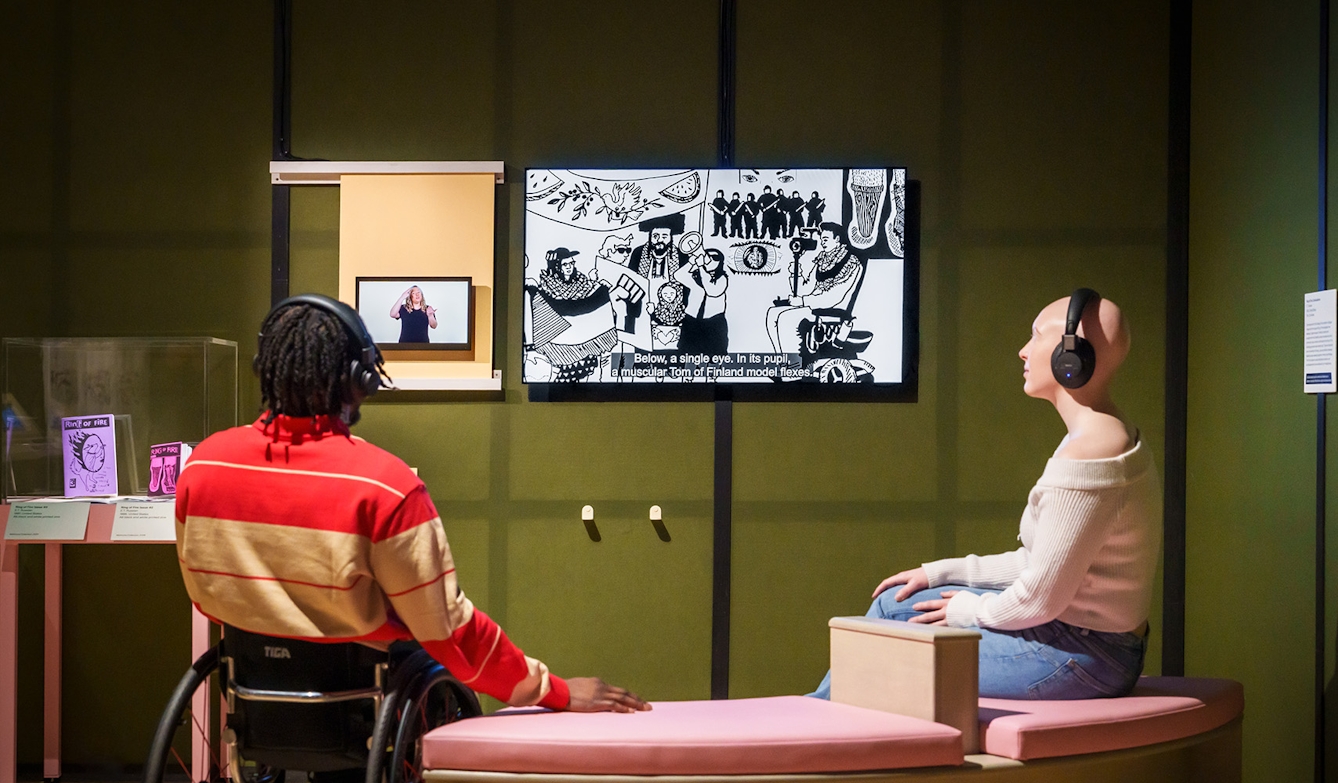
Ring of Fire Animation by E.T. Russian
E.T. Russian is a disabled artist and zine maker.

They made a zine called ‘Ring of Fire’ in the 1990s.
The zine is about being disabled.
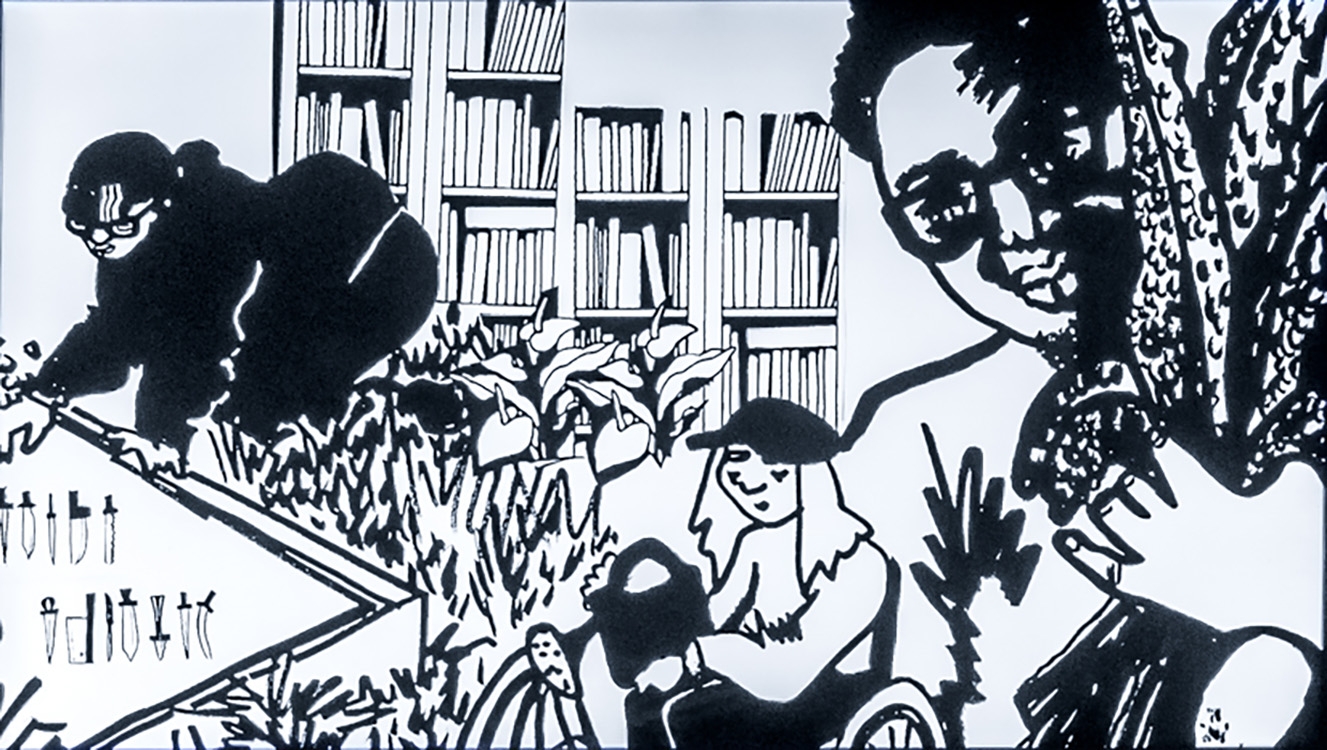
E.T. has made an animation with drawings and pictures from ‘Ring of Fire’.
The animation also has new drawings of E.T.’s friends who have died.

Bed
There is a bed in this room.
You can use the bed to:
- lie down
- rest
- read
- think
You can take off your shoes if you want to. You can keep your shoes on if you want to.
The bed is cleaned every day.
Only 4 people maximum are allowed on the bed at a time.
Please do not jump on the bed.
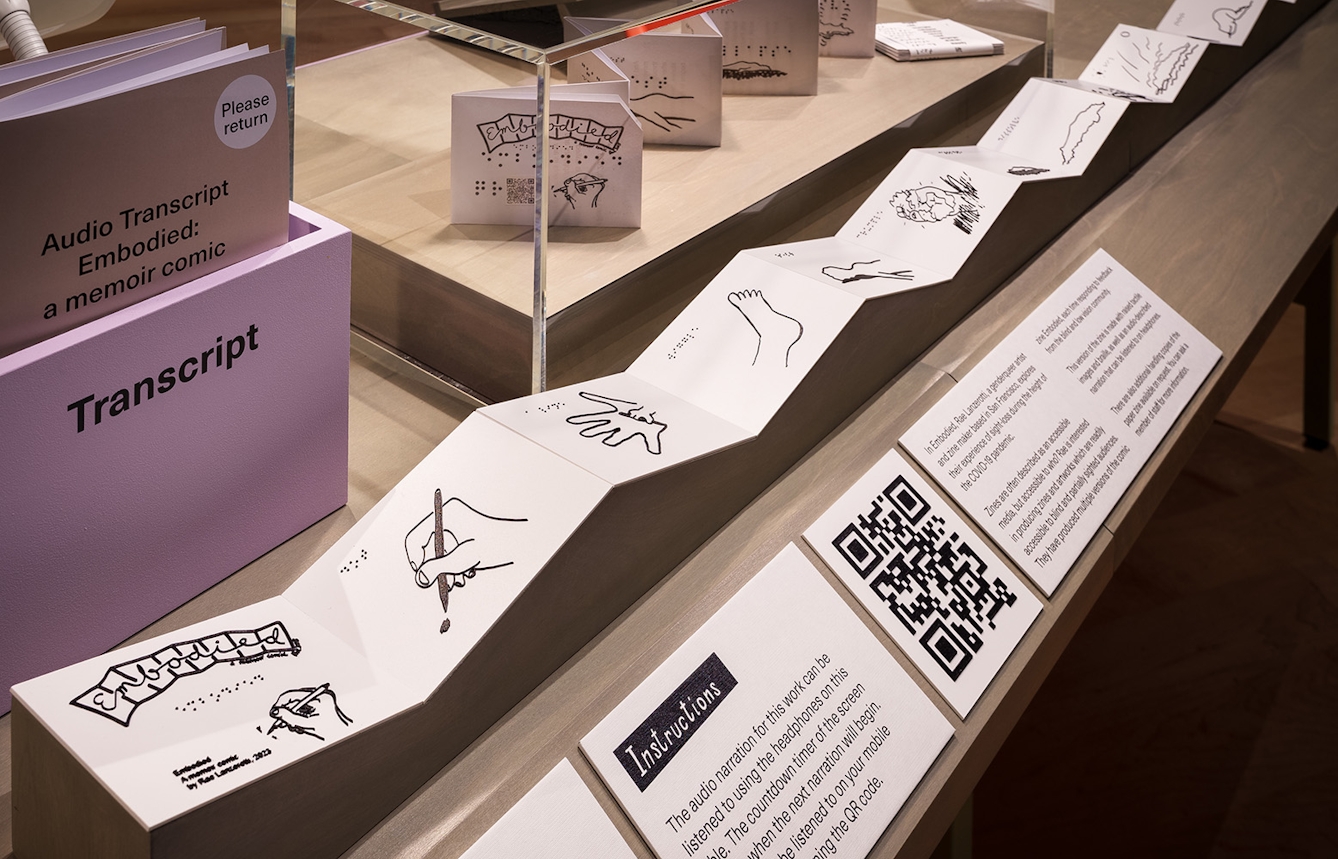
Embodied: a memoir comic by Rae Lanzerotti
Rae Lanzerotti is a partially-sighted zine maker and artist. Rae made this artwork to explore ways to allow more people to read zines.
Partially-sighted means sight loss that cannot be helped by glasses or contact lenses.
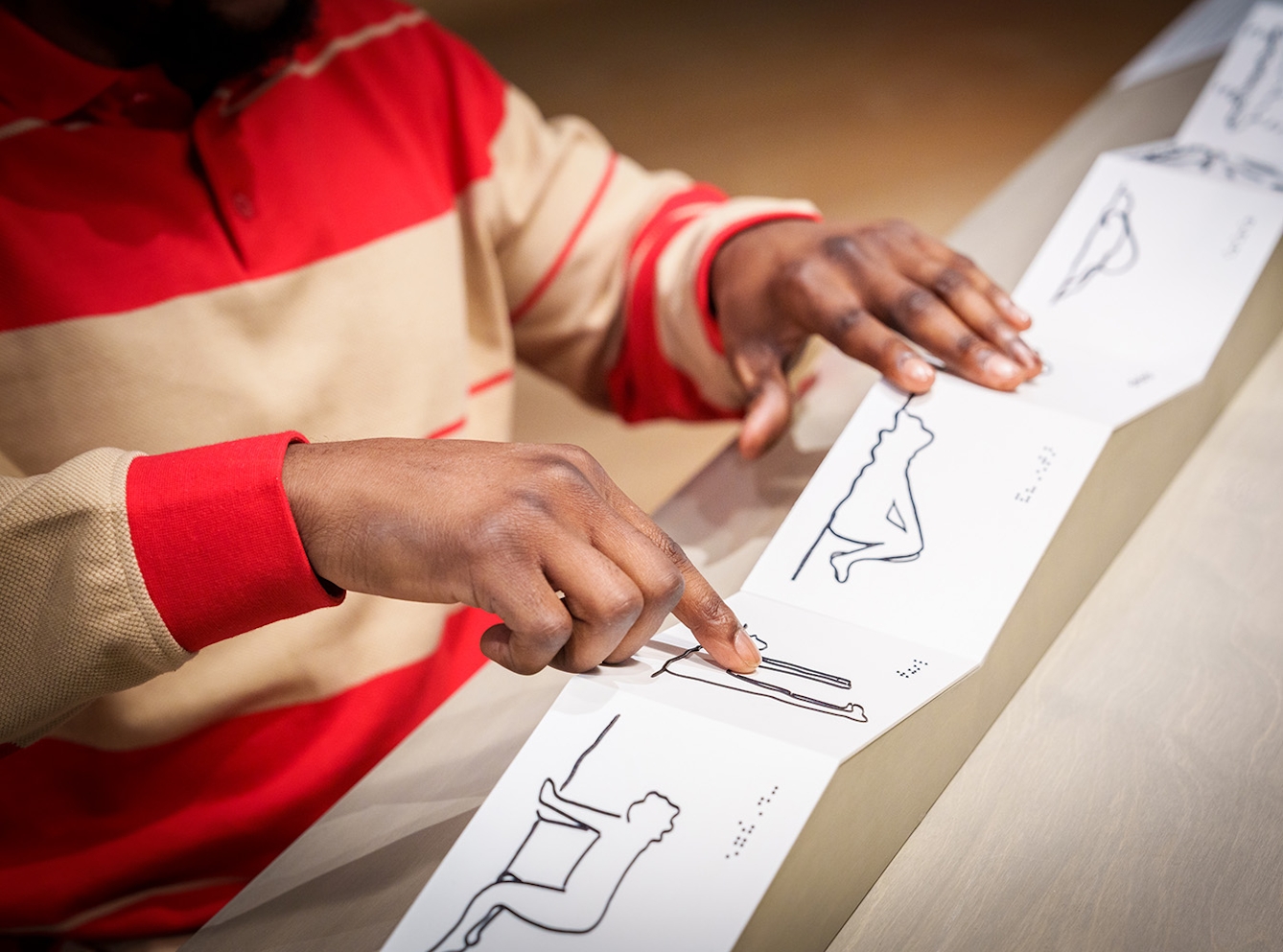
This is tactile artwork. Tactile means you can touch it.
There is a sound clip you can listen to with headphones. The sound clip is about 8 minutes long.
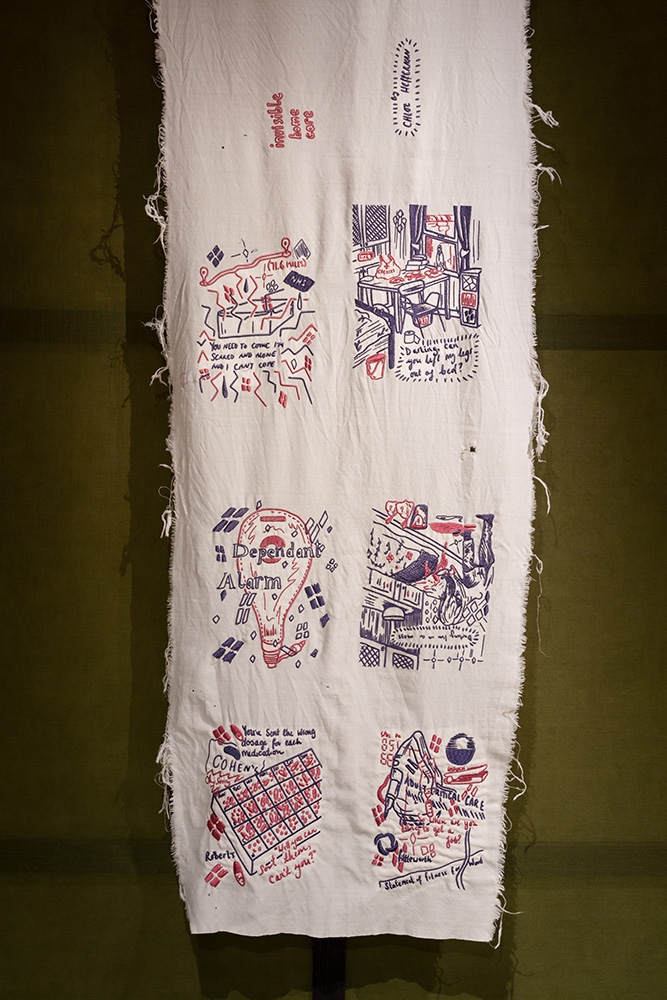
Dependant alarm by Chloe Heffernan
This is an artwork made by artist Chloe Heffernan. It is made out of cloth.
The artwork is about Chloe’s experience of being the caregiver for her disabled mother. A caregiver supports a disabled person or somebody else who needs support.
The artwork talks about how being a caregiver is difficult.
Please do not touch this artwork.
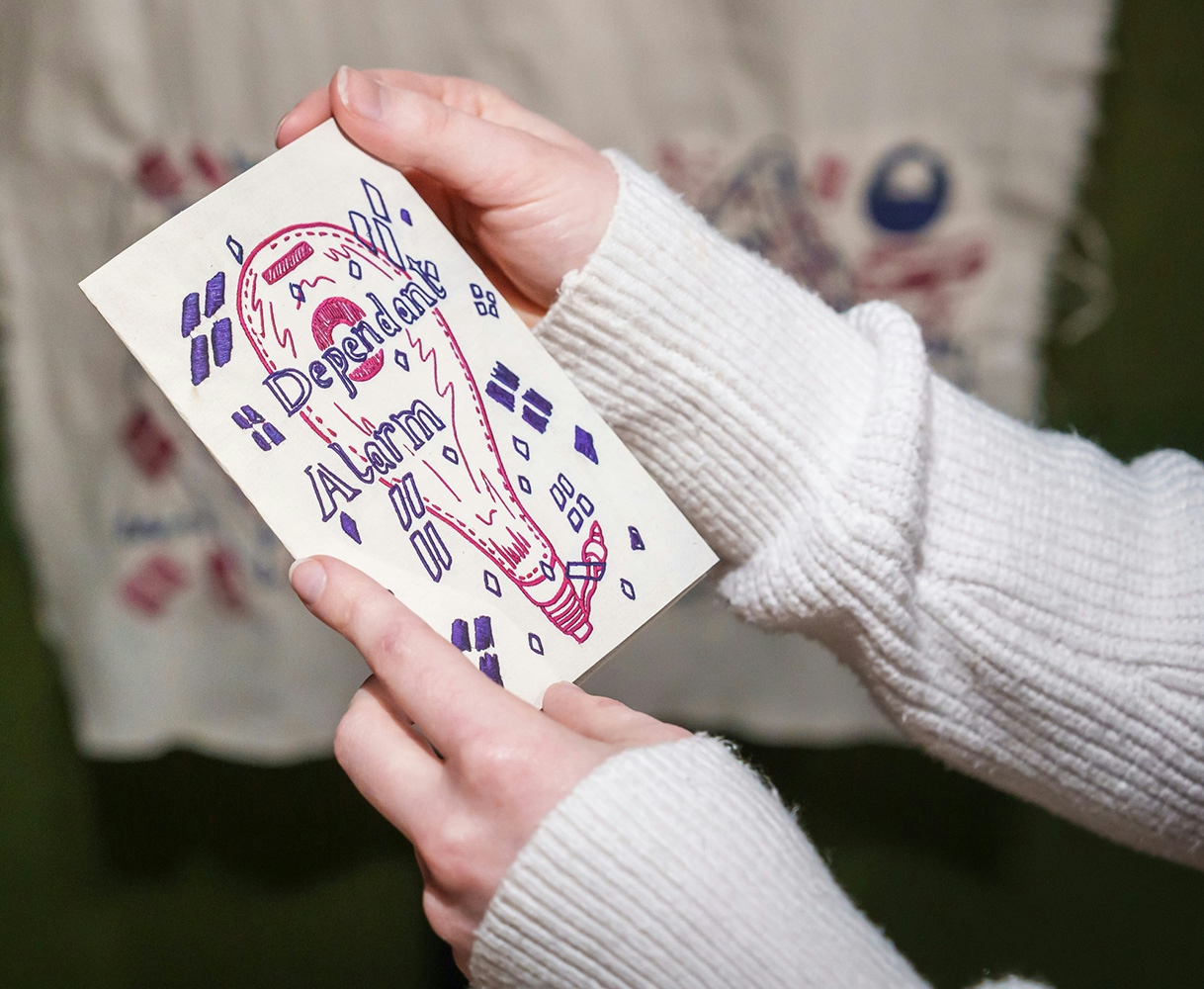
There is also a zine of the same artwork. You can pick up this zine and look at it.

Make a zine!
In this area you can make your own zine if you want to.
On the table there are:
- a zine template
- pencils
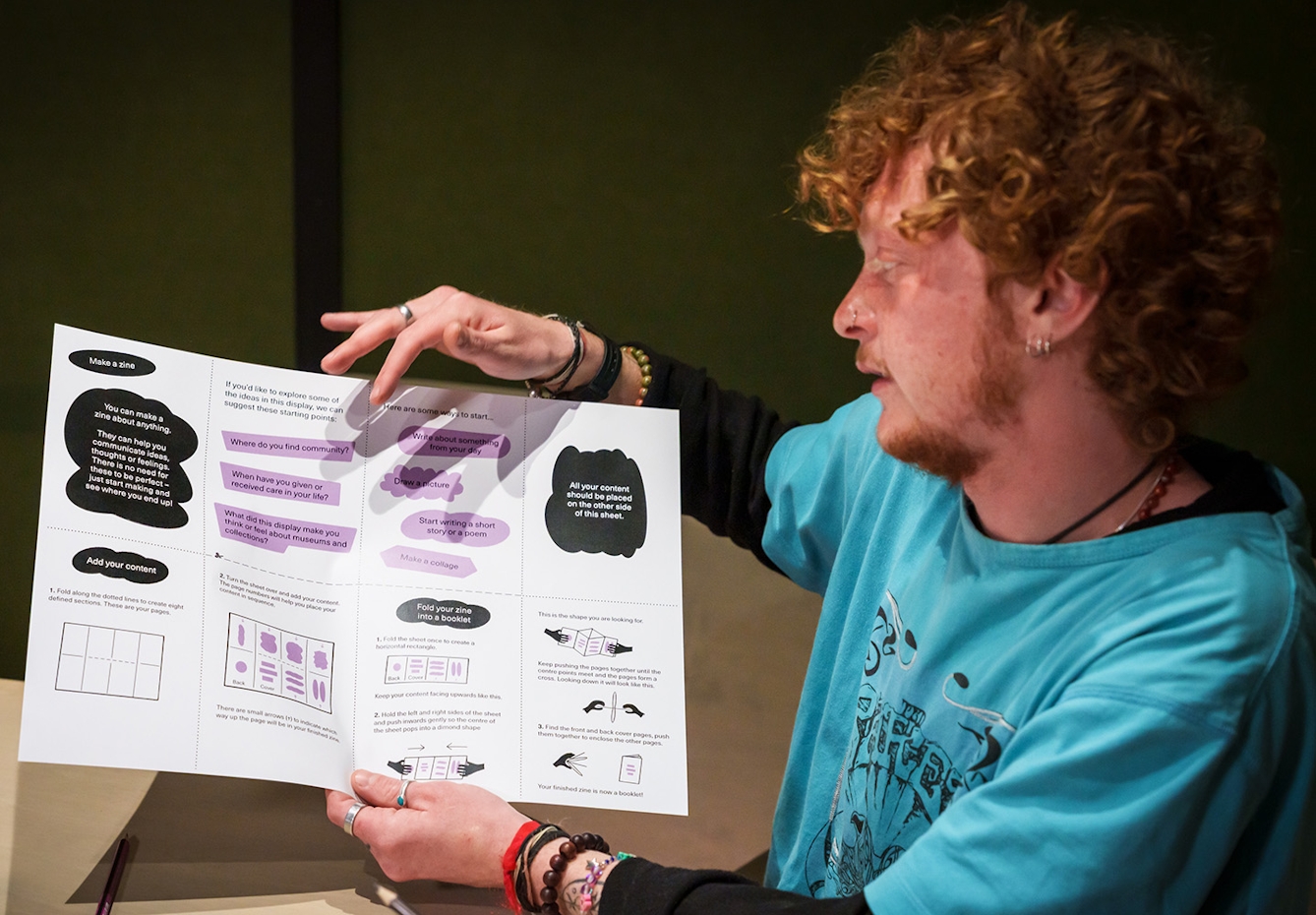
The template has instructions on it.
You can make a zine about anything! You can write or draw your thoughts about:
- the exhibition
- new things you learned at the exhibition
- something else you are interested in
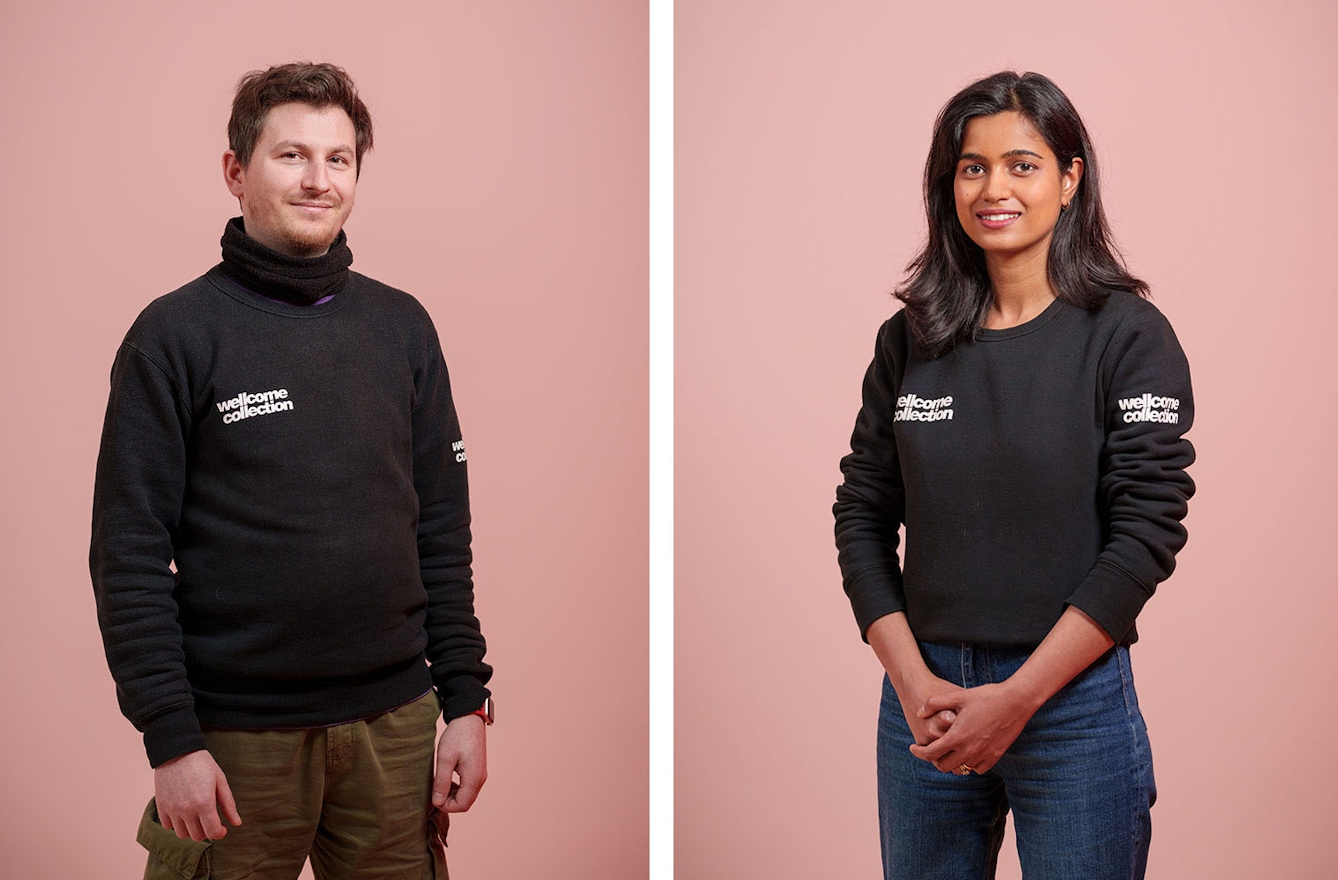
You can ask a member of staff for:
- pens
- scissors
- glue
- magazine cuttings
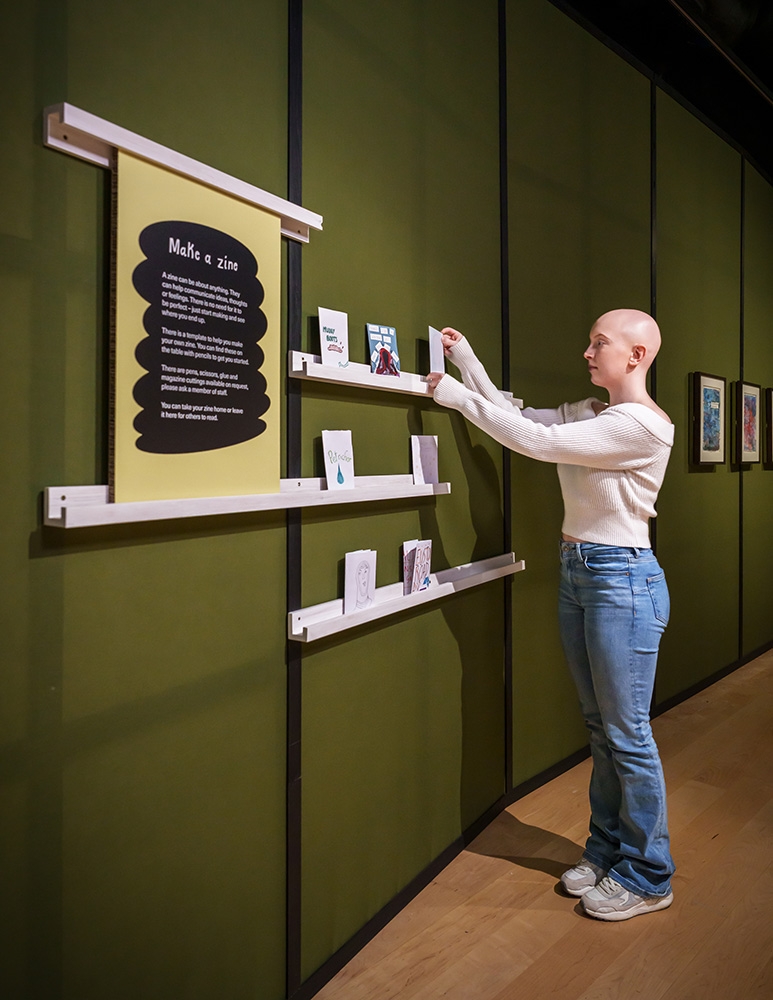
You can take your zine home or leave it here for others to read.
You can look at what other people have written or drawn.
Accessibility in the exhibition
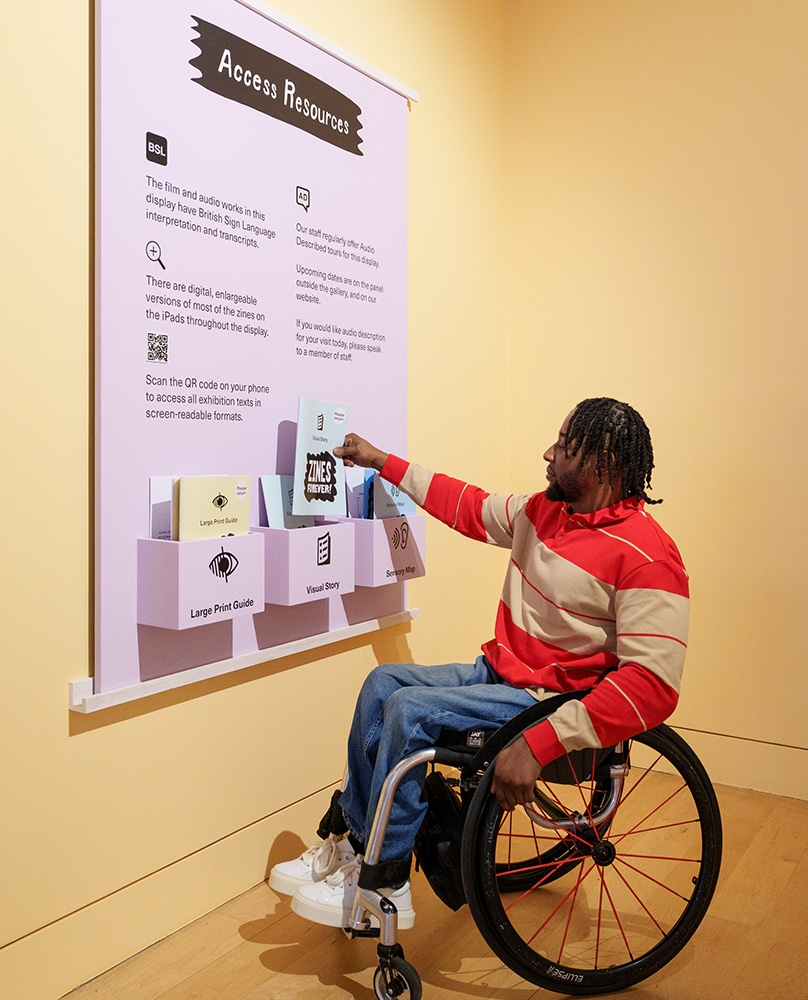
Accessibility means making sure everyone can take part.
Outside the exhibition you will see this text panel.
It has information about accessibility for this exhibition.

Here you can also pick up:
- A large print guide.
- A visual story.
- A sensory map. A sensory map shows you things like where there is loud sound, bright lights, or seating.
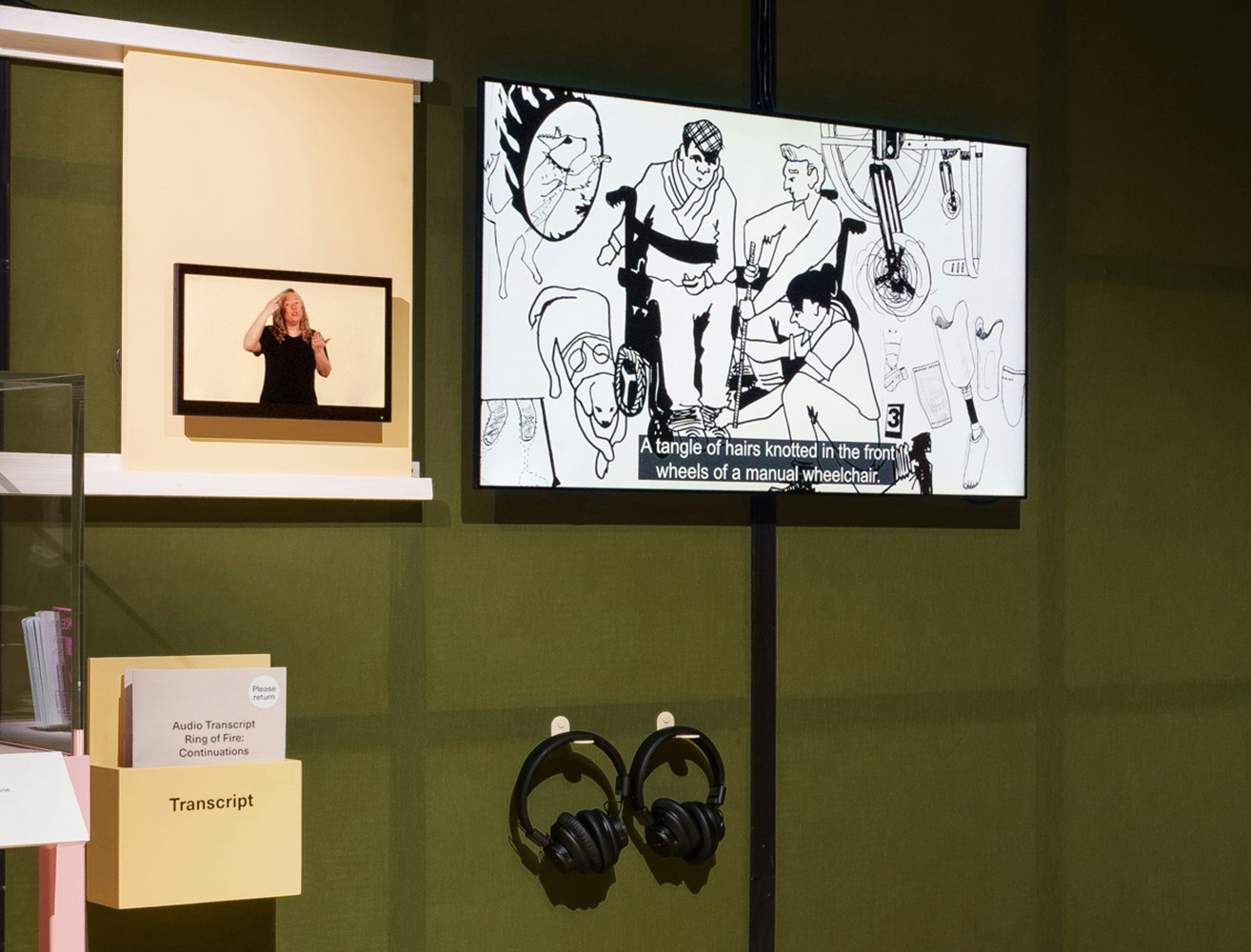
Films and audio works in this display have:
- British Sign Language videos
- written transcripts of the words from the clips

If you need help with anything, you can ask a member of gallery staff.









